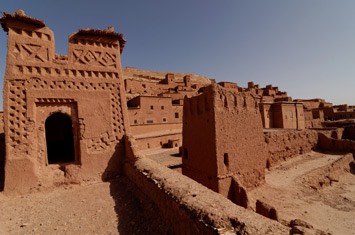
With a time budget of ten days to a fortnight in mid June, we set off for a short camping trip in Morocco. Highlights included stunning mountain pistes in the High Atlas, witnessing the corn harvest, descending through some of the spectacular gorges from which rivers sustain palmeries on the Saharan side of the mountains, visiting sites where famous movies were made and dipping into the madness that is Marrakesh.
We used Chris Scott’s Morocco Overland to choose routes and loaded our GPS navigator with the indispensable “Olaf” (www.island-olaf.de/travel/marokko/gps.html), a map of routes that others have travelled before. Unfortunately, it is no longer being updated, but it's still far better than any commercial Navigator map when it comes to small mountain pistes.
We struggled to output a sensible map of our route from Google Maps, because they put a limit on how much data can be displayed. Our track log greatly exceeded their limit but we found a way of doing it (using fusion tables), although instead of displaying a nice line, the track is represented by a series of dots. You can access it on Google Maps here and zooming in will show ever increasing detail.
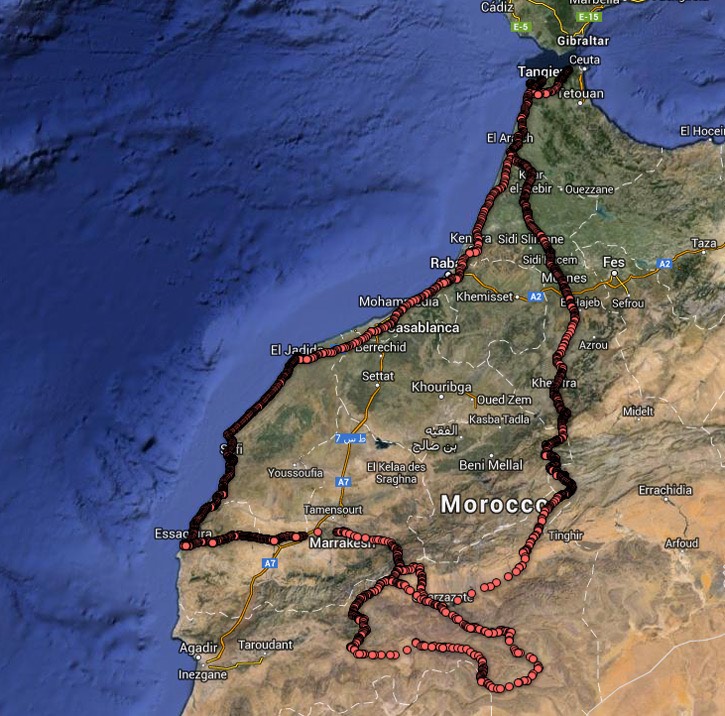
Monday, 10/06/2013 – Spain - Meknes
We arrived in Algeciras in time to catch the mid-day FRS ferry to Tanger Med. The border crossing was exceptionally smooth and quick, largely helped by the fact that we had already completed our temporary vehicle importation documents online and printed them out. Pointing this out to us, one of the guys marshalling the queue had us sent straight to the front of a new line and we were through within a few minutes. We made a short detour to the Gare Maritime to milk the ATM before joining the new motorway. It’s a toll road all the way to Agadir now, but we left the big highway at Larache after paying 45 dirhams (€4) and headed to Meknes on the old Route Nationale.
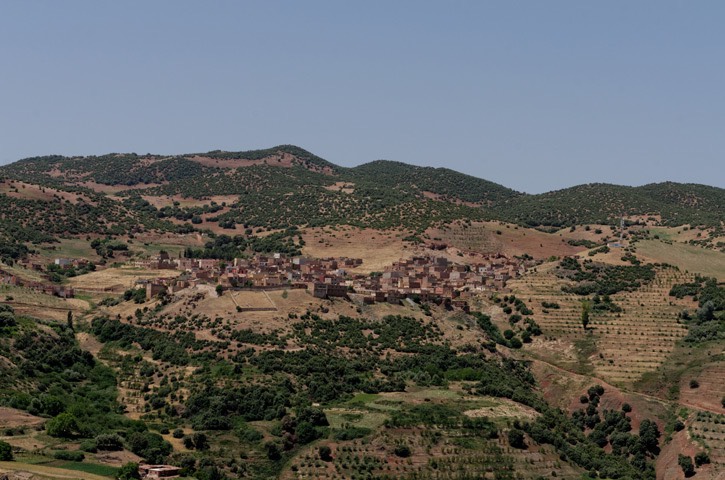
For that first night we had decided to stay at the Ibis hotel, so we could have a good rest and set off early the next morning. The evening was spent on a mad dash around the city in an attempt to unlock Mick’s Vodafone mobile for internet access with a Moroccan SIM card. We learned two things: that Vodafone ES phones can’t easily be unlocked; and petit taxi fares can be extremely cheap. We paid all of 5 dirhams for a trip into Centre Ville.
One critical lesson for drivers to learn in Morocco concerns rights of way on roundabouts. We nearly learned the hard way many years ago, when indecision about which exit to take sent us on a full circle around a roundabout, and brought us face to face with a horn-blaring, tyre-screeching Mercedes taxi crammed with people, careering towards us from the main road with all four wheels locked. There doesn’t appear to be any consistent hard and fast rule other than never to assume you have the right of way whether joining or already on a roundabout. The huge roundabout near the Meknes Ibis provided a testing refresher course on this bewildering aspect of the Moroccan highway code. That’s code as in secret cipher, as opposed to rules and regulations.
Tuesday, 11/06/2013 – Meknes - Agoudal
We left town in the direction of Khenifra on a slow road. This drive delivered the only serious traffic scare of the trip. Climbing up a winding road with blind bends, a steep drop below and a sheer face above, we tucked in behind a big articulated lorry with no chance of overtaking. Suddenly, another truck came round a bend from ahead at high speed in the middle of the road. It managed to miss the truck in front of us, hit the wall over the drop, bounced back and started to spin, miraculously missing us and disappearing in a cloud of dust behind us. We thought it had gone over the edge. We stopped and walked back, together with the driver of the truck in front of us and two guys from another car. As the dust cleared, we saw the truck wedged across the road, completely blocking it. If we had been just a few metres back from the lorry in front we would have been wiped out. It was a great relief to see the driver and two passengers scramble out of the cab, apparently unhurt. We left the locals to sort things out and headed on up the road feeling very shaken.
At El Kebab we left the road thankfully, and headed into the mountains on one of Chris Scott’s routes (MH2). Although until recently this was a rough piste, the first section has now been sealed and is in good condition. We climbed to about 2000 m, passing through Imlchil, famous for its annual wedding market, then on towards Agoudal.
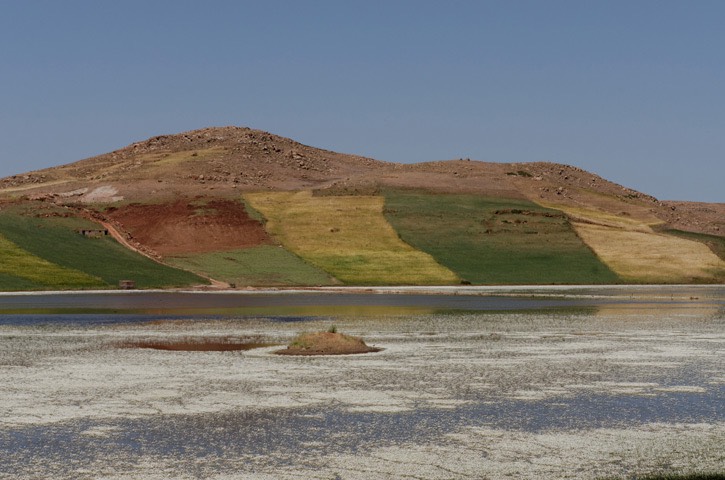
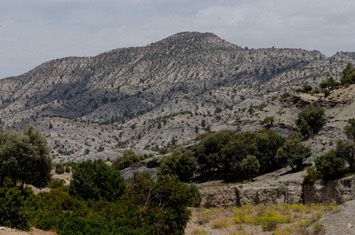
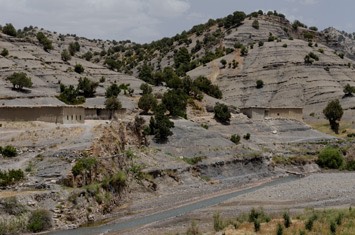
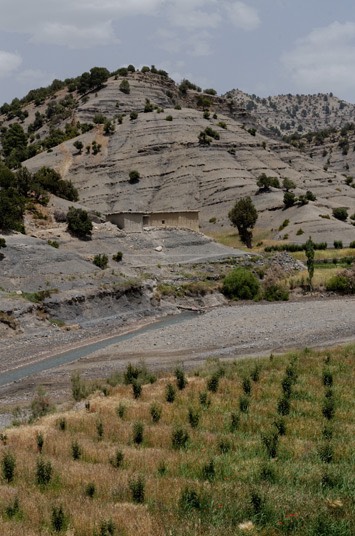
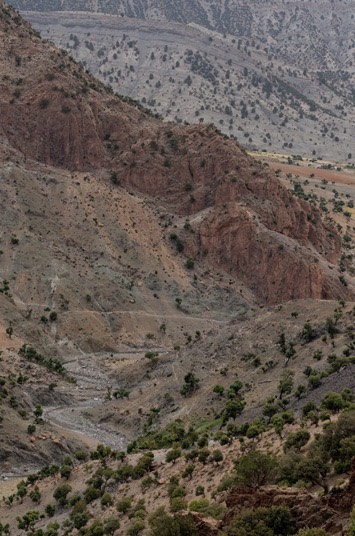
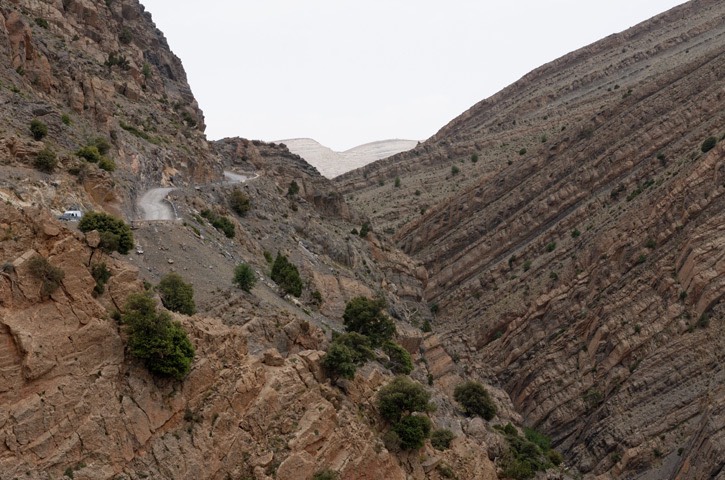
Villages don’t tend to advertise their names on signs, and it wasn’t until we had set up camp just outside a village that we realised we had actually made it to Agoudal. The campsite was in a compound on a hillside. It had some level ground but this was very stony and almost impossible to drive tent pegs into, so we used rocks to hold the guy ropes down. The two lads running the place sat drinking from a plastic water bottle filled with a brown liquid. They offered us a drink, and Mick was surprised to find it was a local firewater: some kind of Berber hooch. It felt good to be up in the mountains at last, well away from the main roads and traffic. Flocks of choughs tumbled overhead, announcing themselves with their wheezy call, as they descended to forage about on the bare ground near the camp site.
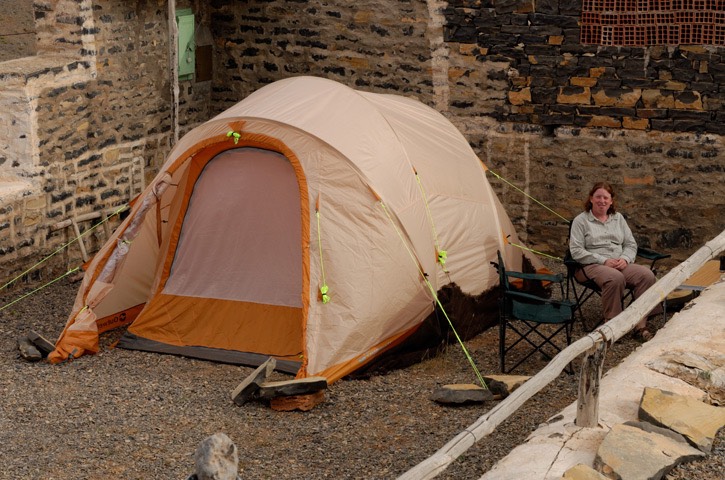
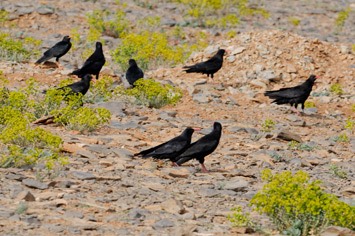
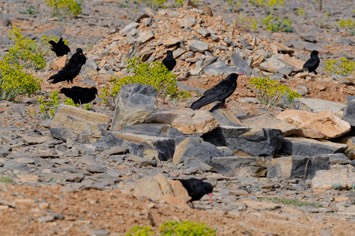
Wednesday, 12/06/2013 – Agoudal - Ouarzazate
At Agoudal we joined Scottie’s MH1 route, which is a spectacular piste all the way to Msemrir through dramatic upland scenery. Valleys high in the uplands were surprisingly green for the time of year, their lush meadows contrasting with the bare, baked hillsides. Ribbons of fertility threaded their way through the hills on the banks of these fresh mountain streams, sustaining narrow bands of cultivation producing cereal crops and vegetables, along with poplar trees for timber.
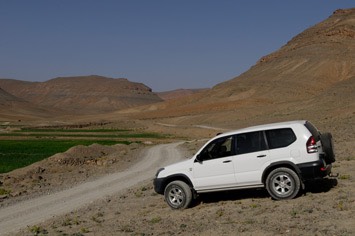
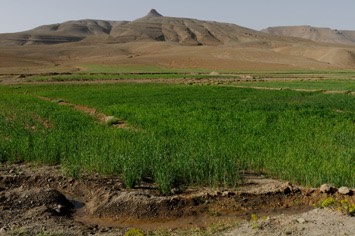
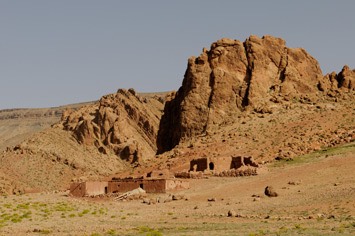
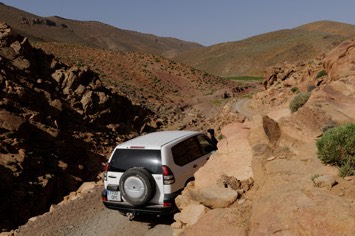
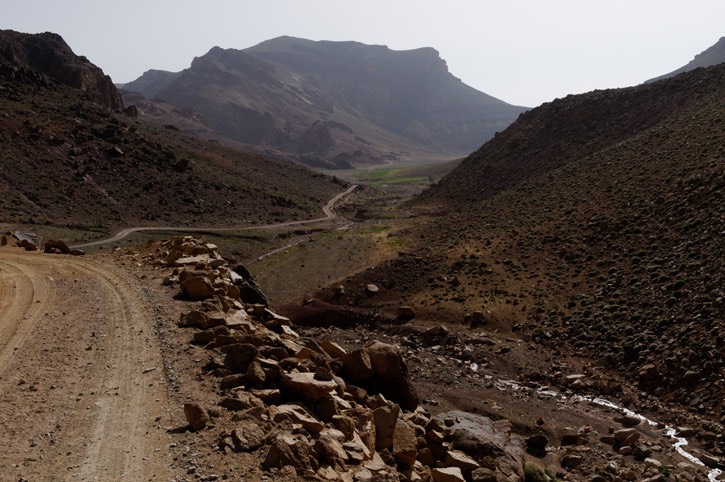
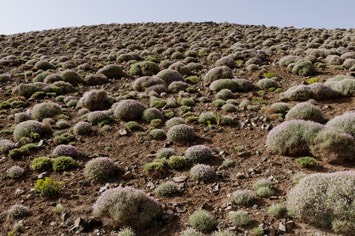
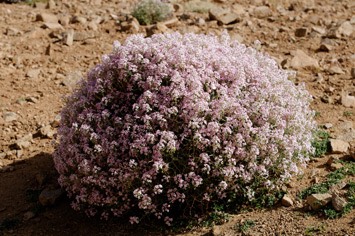
It was corn harvest time in the Atlas and sheathes of corn on long stalks that had been laboriously gathered by sickle and hand were everywhere stacked against walls and roadside banks, ready for threshing. In the more remote areas, the corn was collected in and around threshing floors, where it would be flailed by hand and winnowed by tossing it into the air. Other villages shared the use of funky old threshing machines, which were towed by tractor from one community to the next.
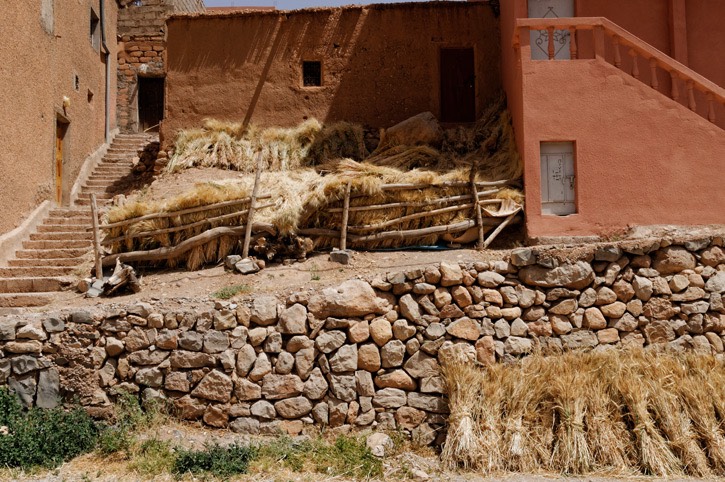
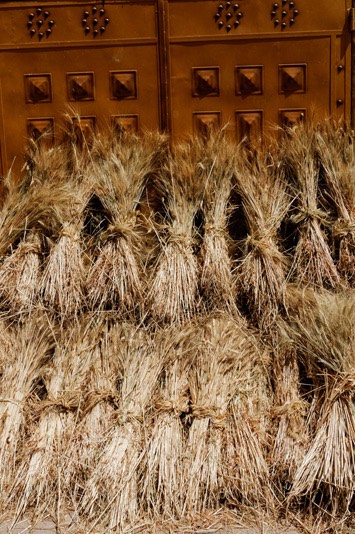
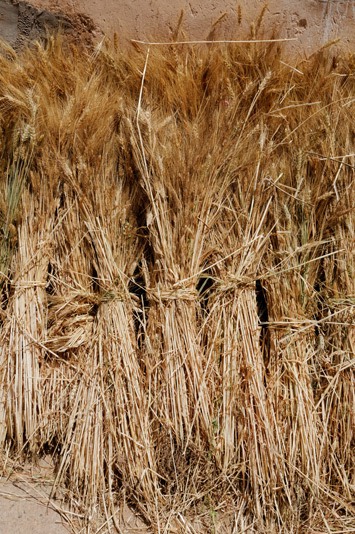
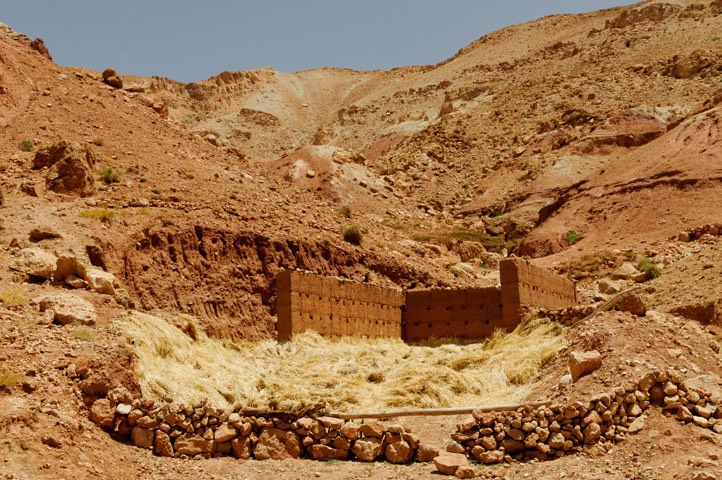
Climbing to the highest pass at 2900 m, we then gradually descended into the upper Dades Gorge. At Msemrir we stopped at a café for a refreshing dose of mint tea. A smartly dressed policeman chatted with us to show off his excellent English. The Dades Gorge became ever more spectacular as we wound our way down through hairpin bends.
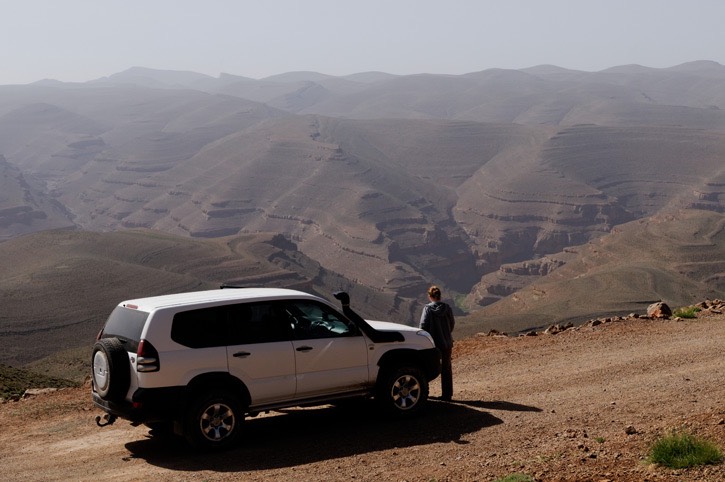
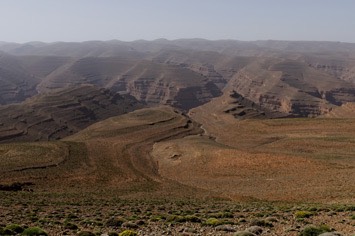
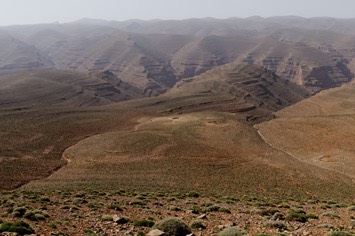
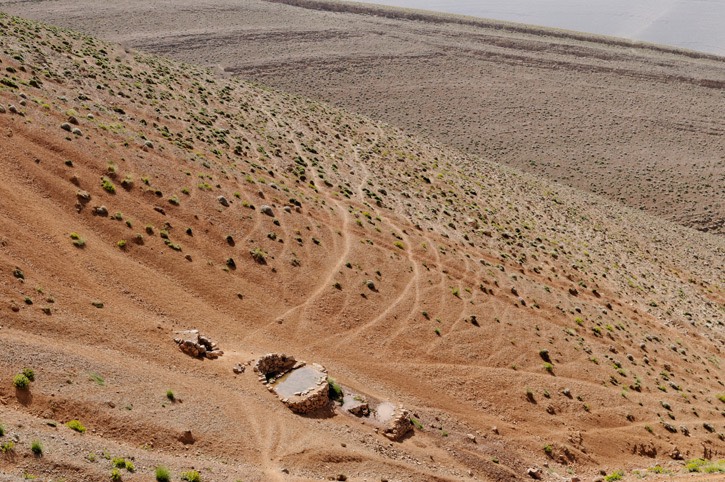
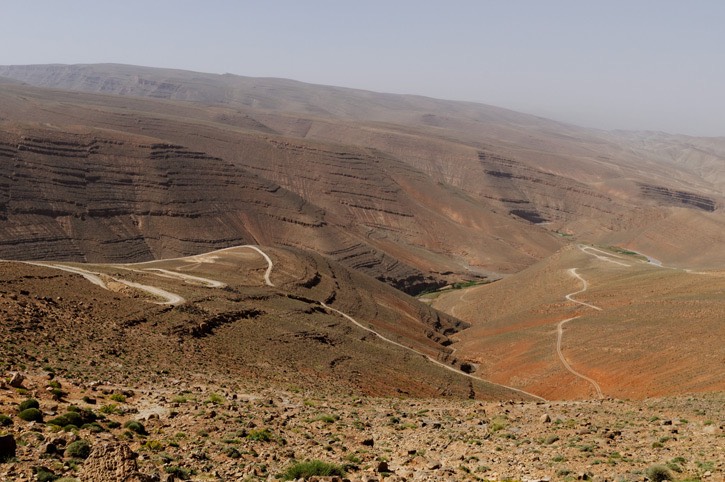
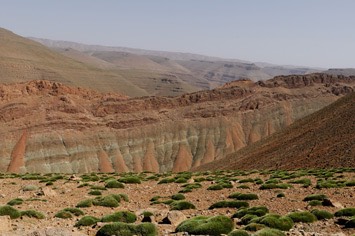
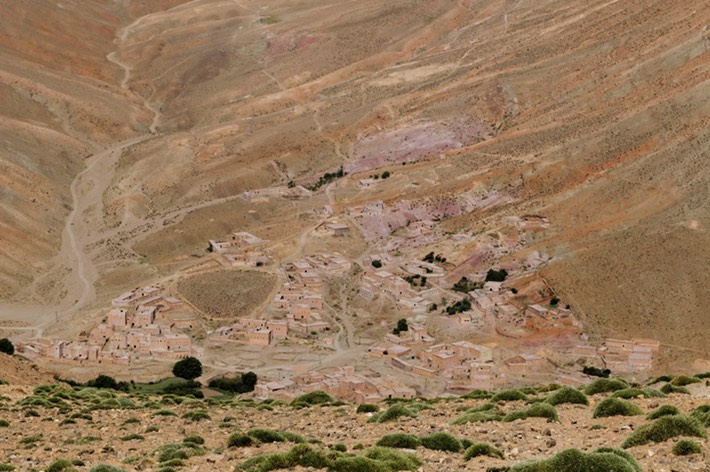
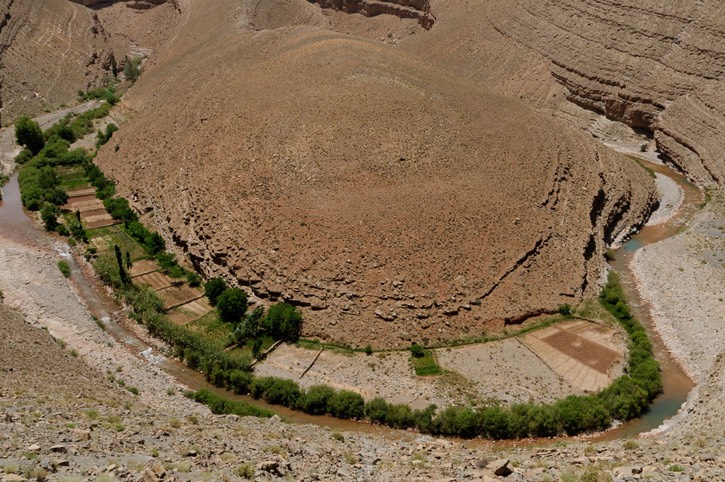
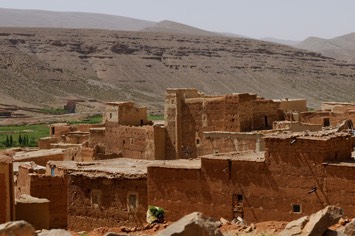
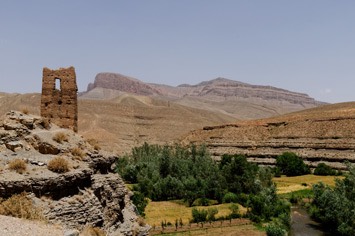
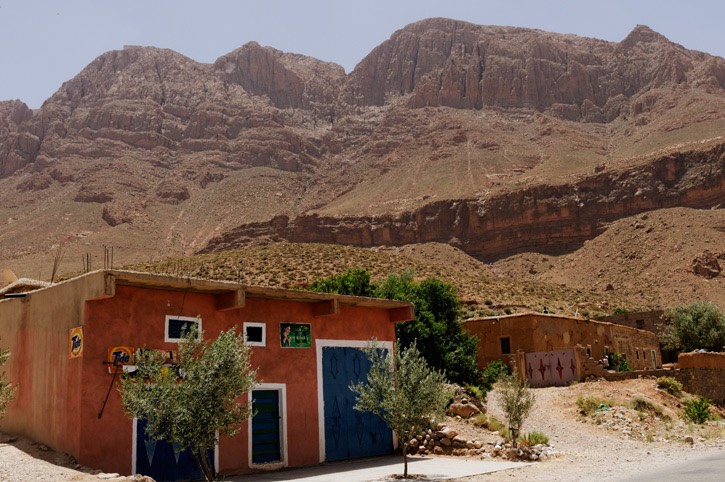
Finally we arrived at civilisation in the form of a restaurant with campsite and modern facilities (i.e. flush toilets) where we stopped for a rather expensive, but excellent lunch. Immediately afterwards, we came across our first tourists.
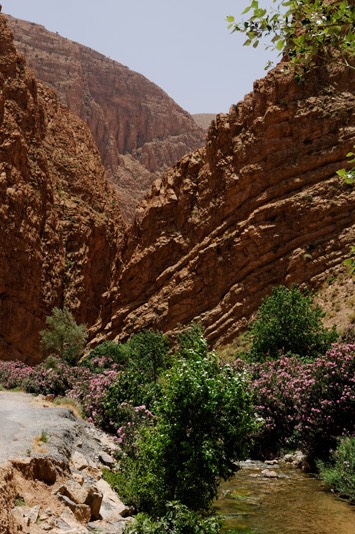
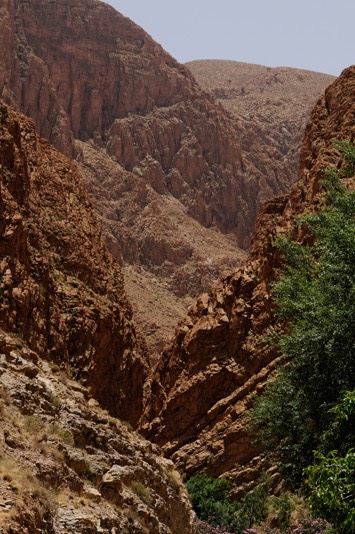
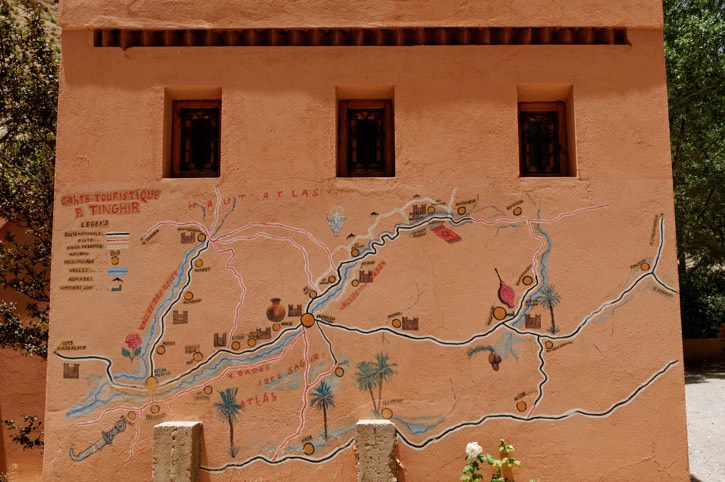
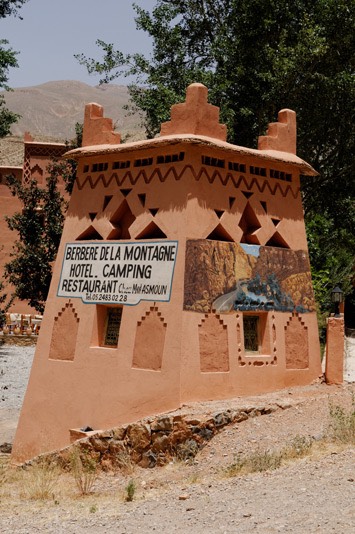
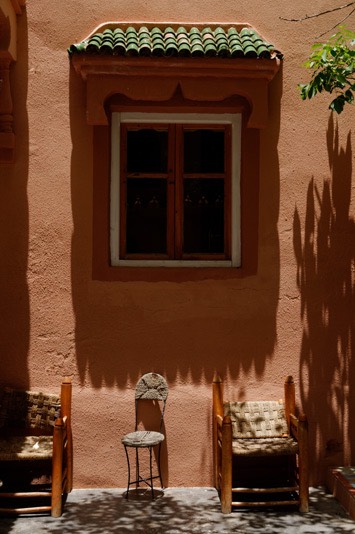
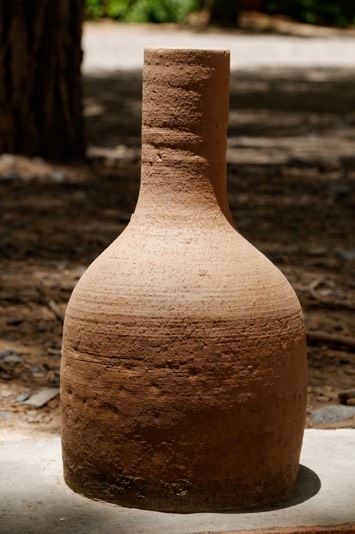
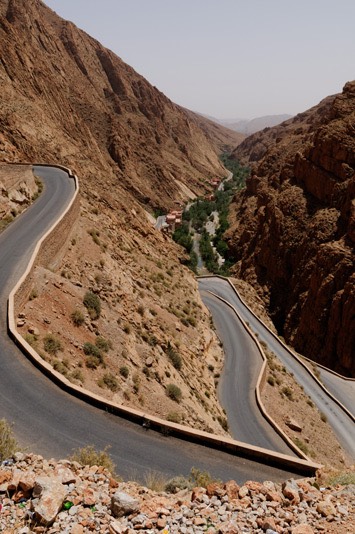
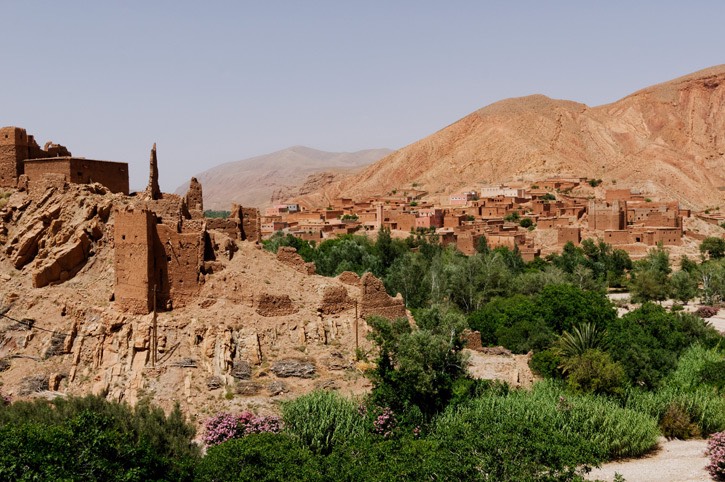
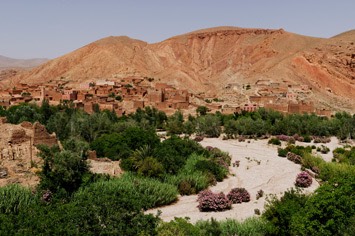
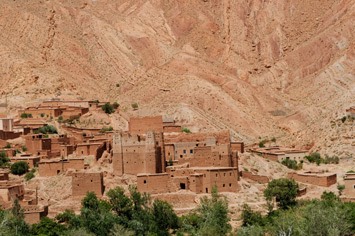
Further down the gorge we stopped to gaze at some weird rock formations.
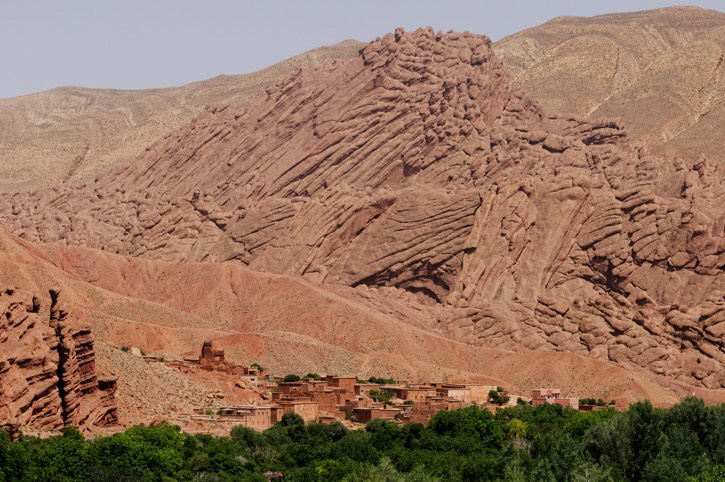
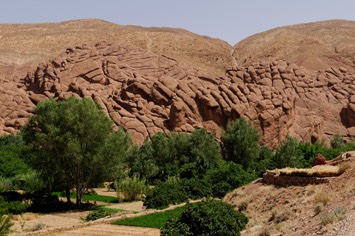
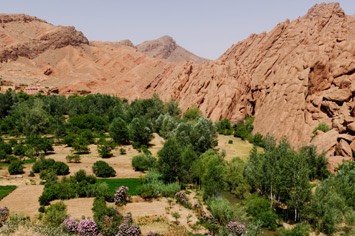
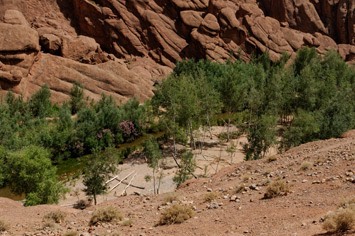
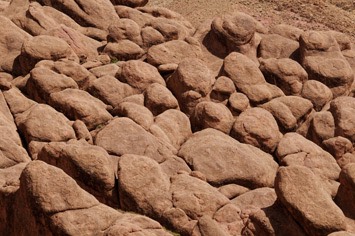
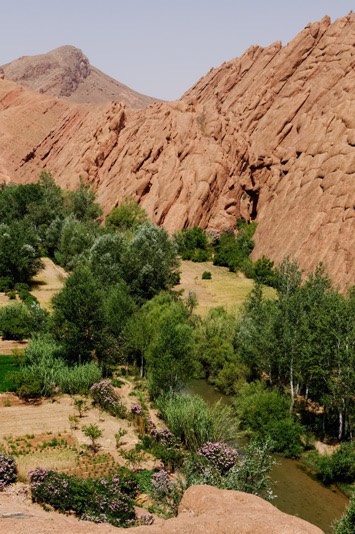
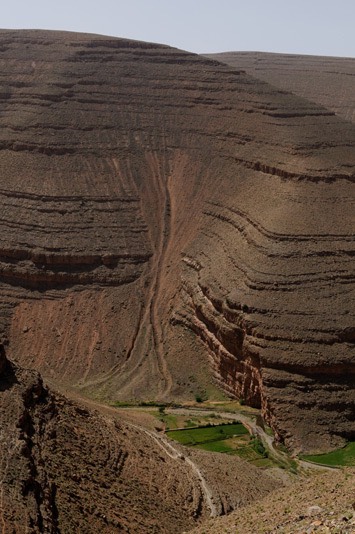
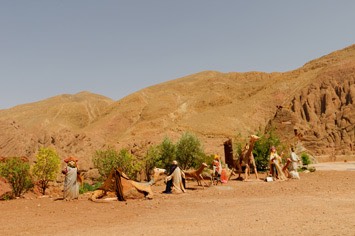
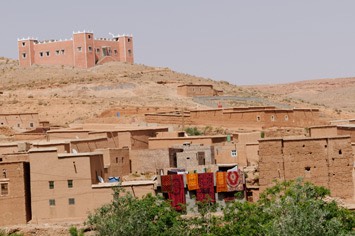
All through the mountains we had only met one other vehicle, a truck just outside Agoudal. Joining the main road near Boumalne Dades, we headed for Ouarzazate and pitched into the virtually deserted campsite on the outskirts of town. This is a camper van haven in winter, but at this time of year we were the only occupants.
Thursday, 13/06/2013 – Roundtrip near Ouarzazate, via Aït Benhaddou
Ouarzazate is the centre of the movie scene in Morocco. We decided to visit some of the well known sites that have attracted both the film industry and tourists, starting with the World Heritage site of Aït Benhaddou. This incredibly well preserved fortified city, or ksar, has been the setting for an impressively long list of movies, starting with Sodom and Gomorrah in 1963 and including Gladiator, Babel, the Sheltering Sky and many more. There were few tourists around when we arrived and we explored the ksar by ourselves.
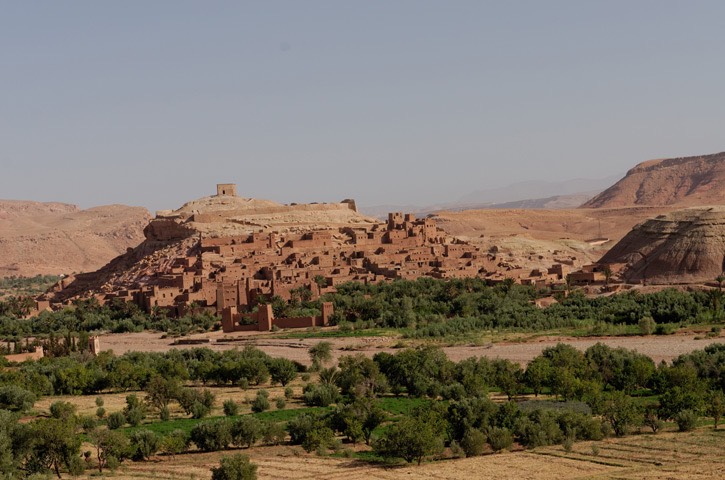
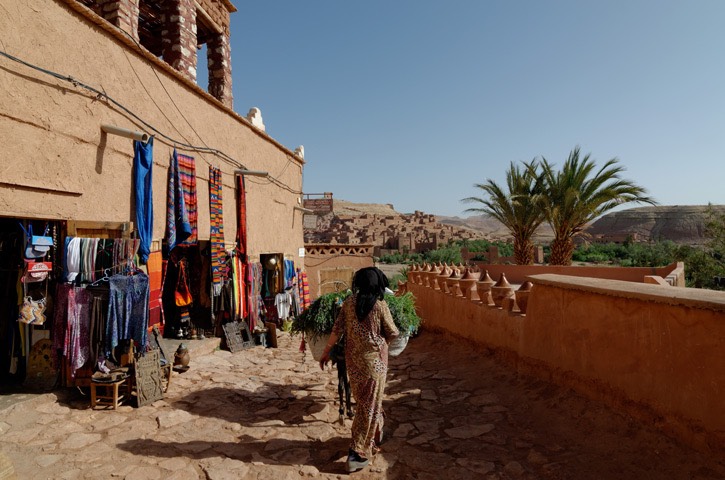
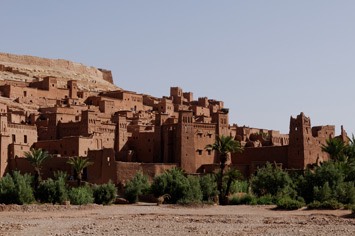
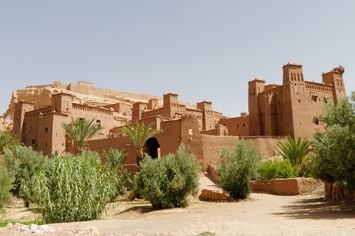
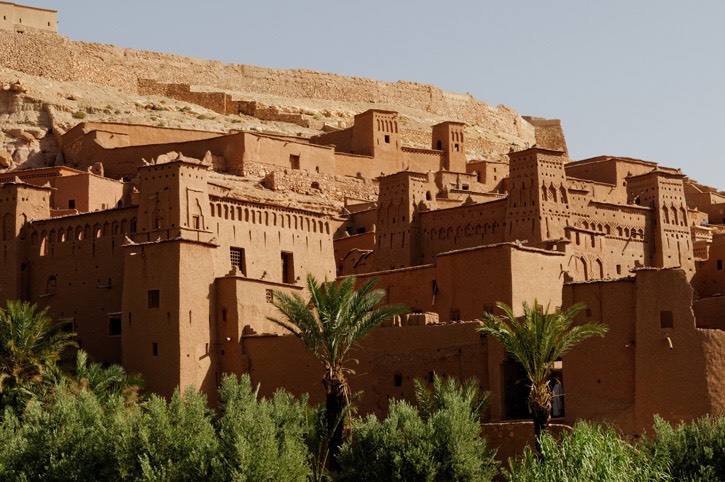
We saw this symbol everywhere: on doors, walls, market stalls and shop signs. Later, we discovered that it is the final letter of the ancient Berber alphabet or Tifinagh. The symbol is called Aza and it represents the Berber free man.
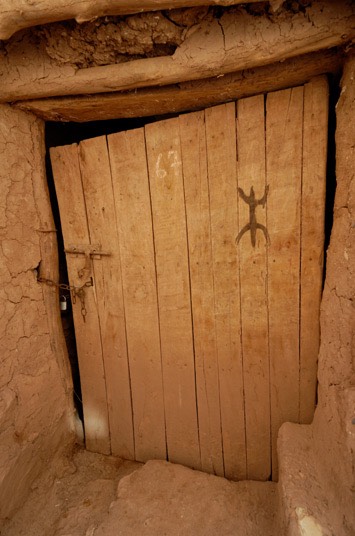
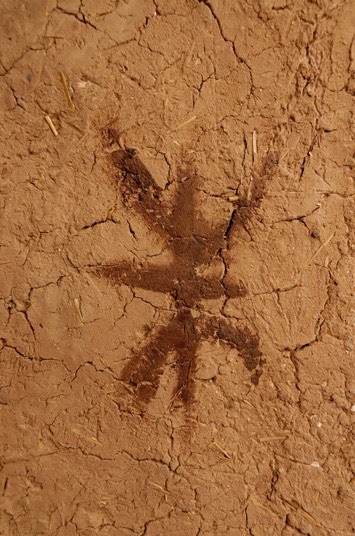
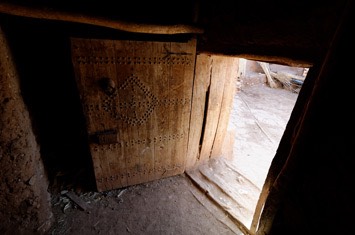
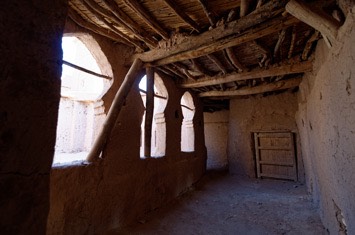
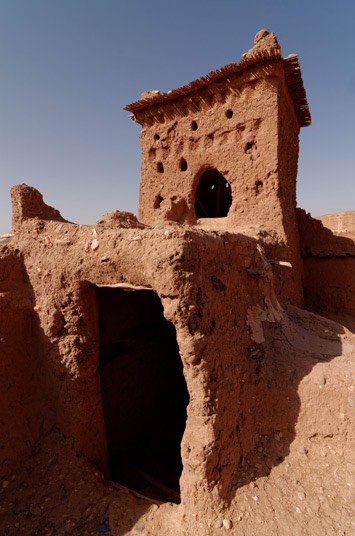
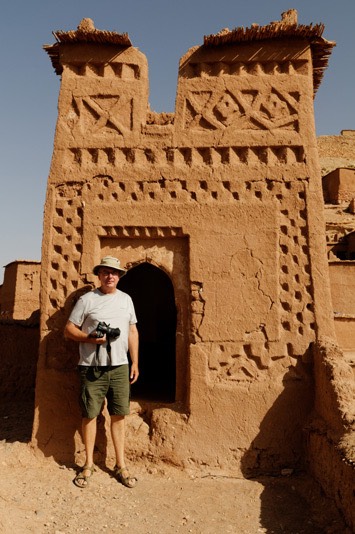
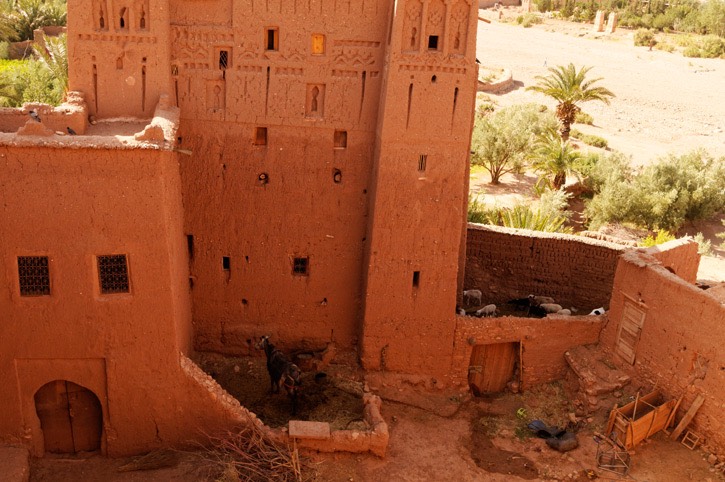

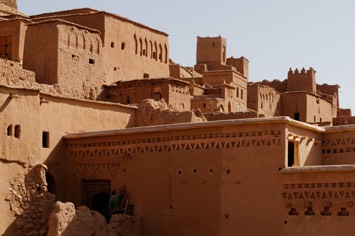
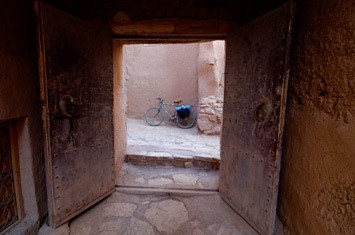
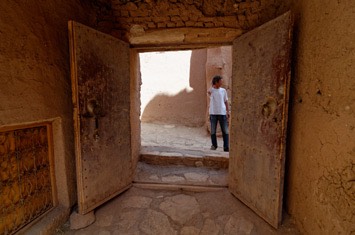
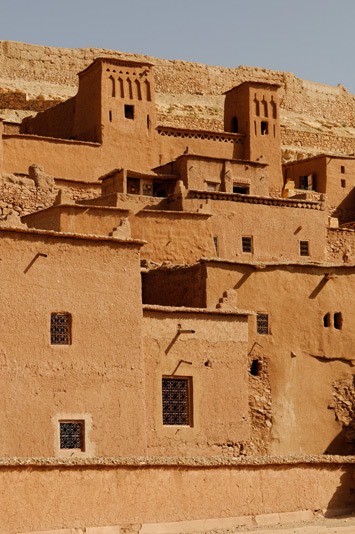
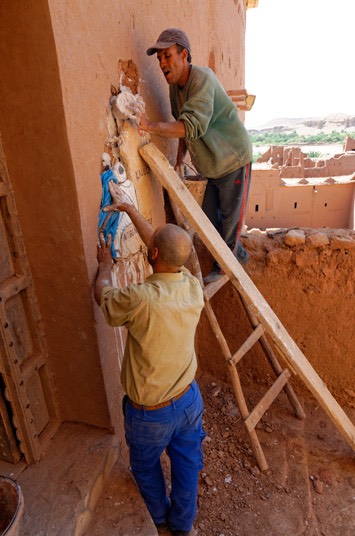
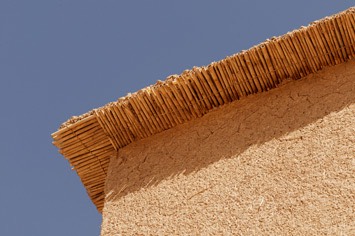
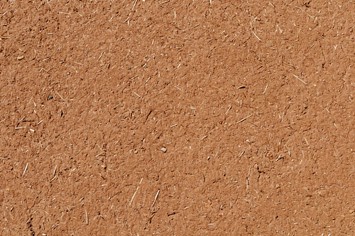
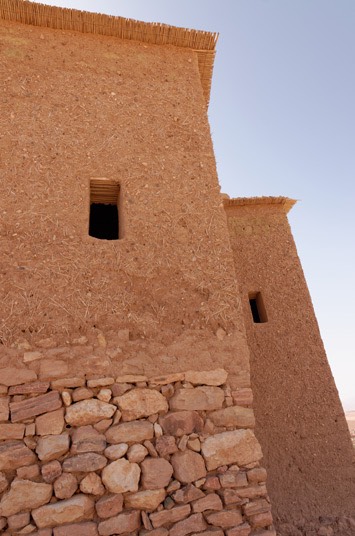
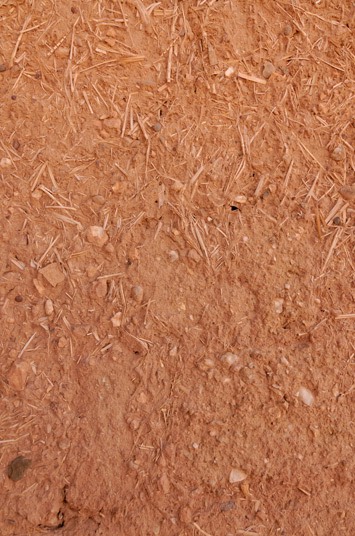
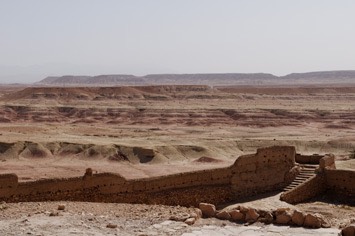
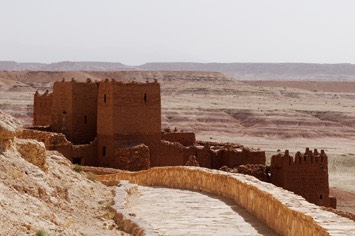
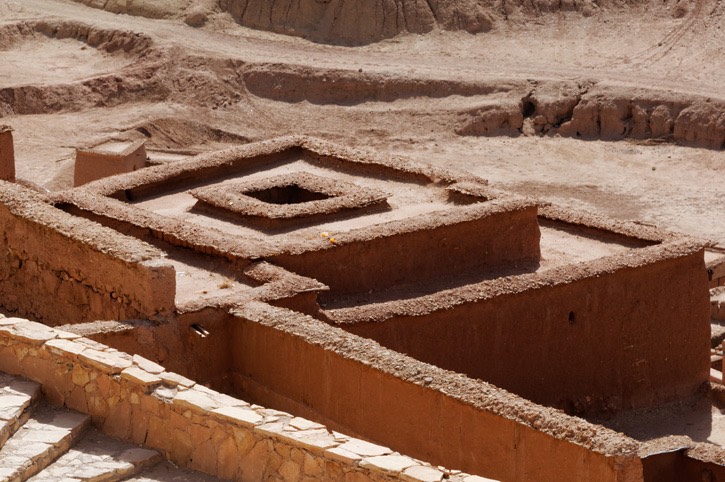
At a little gallery we were shown a technique for painting with a secret ink that’s developed by heating the paper over a flame. While the adept salesman demonstrated the magical process, the young artist relaxed above us on an ochre wall, dressed in his blue jelaba.
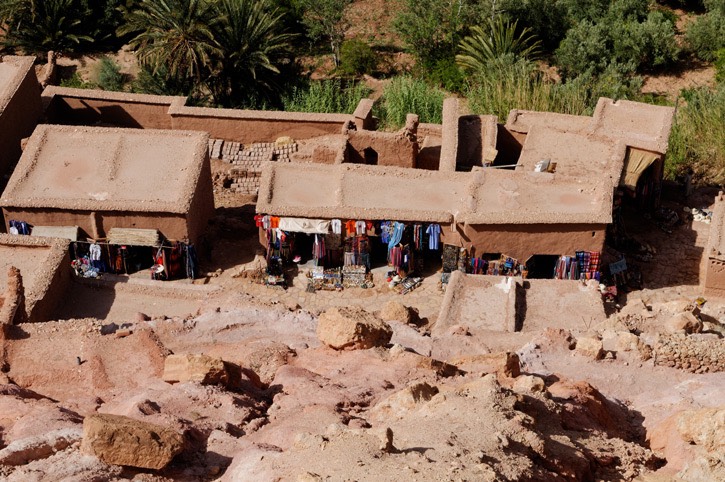
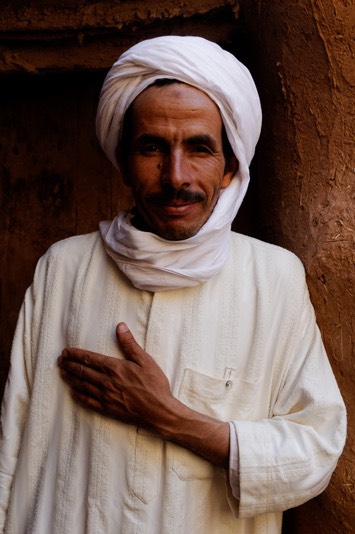
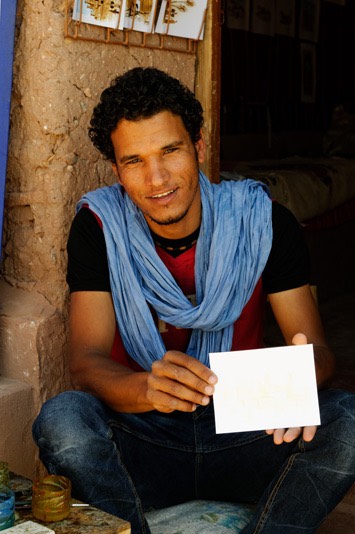
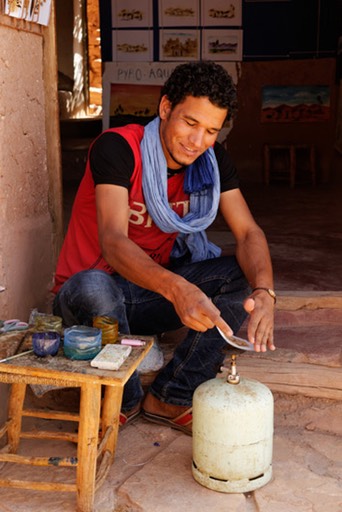
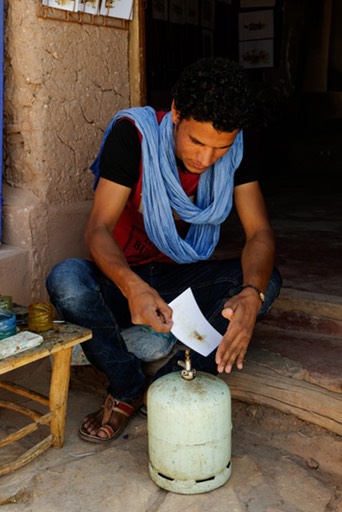
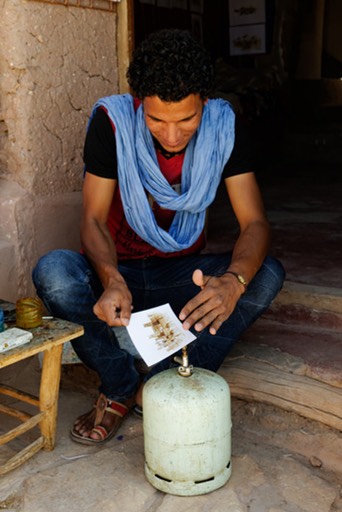
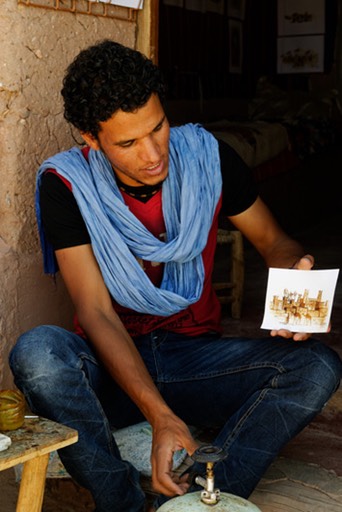
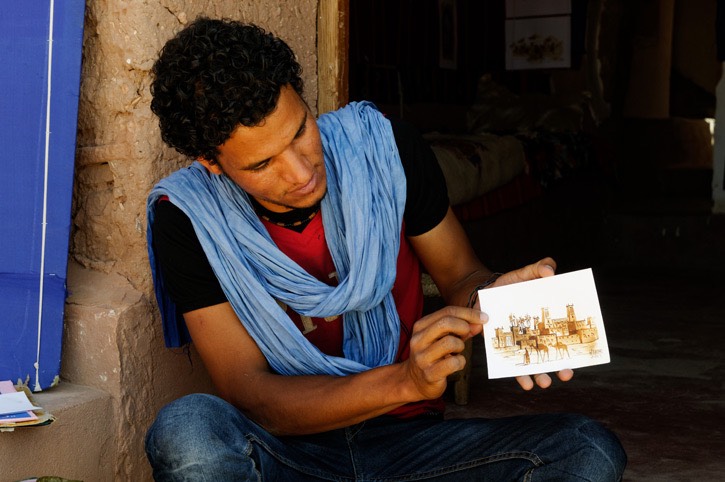
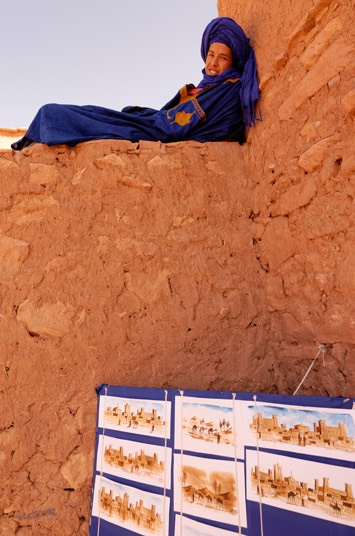
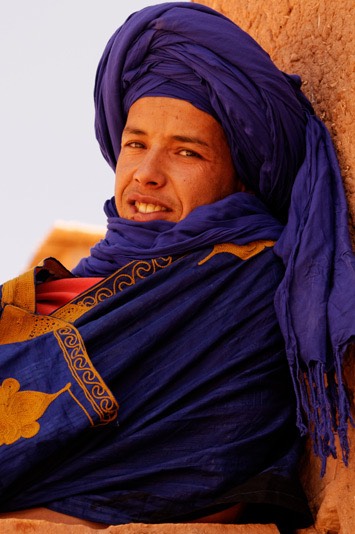
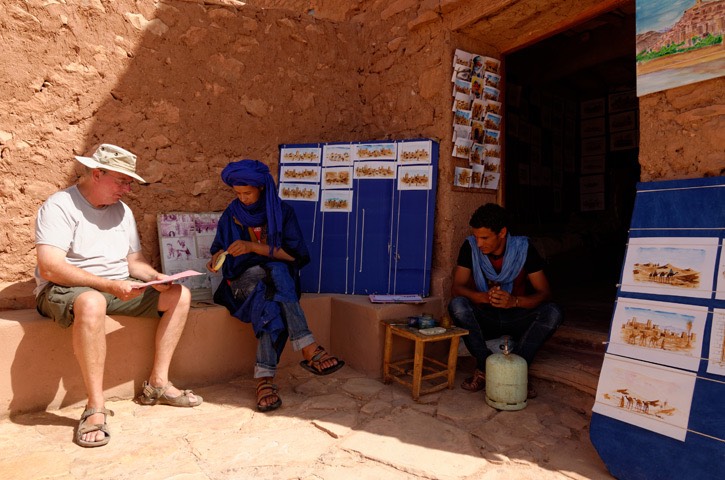
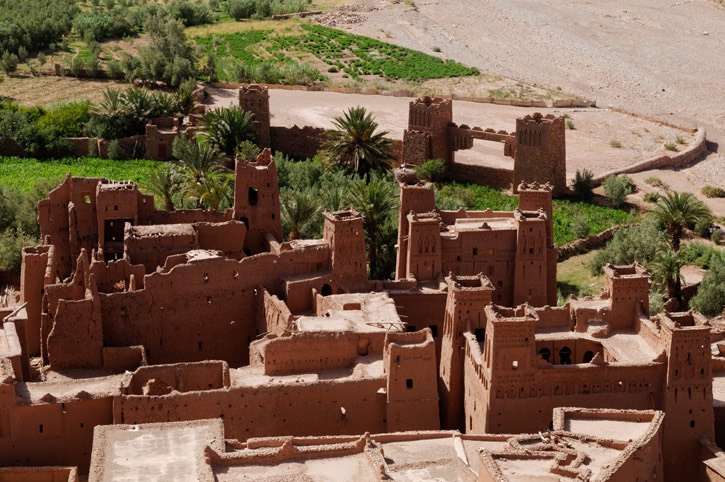
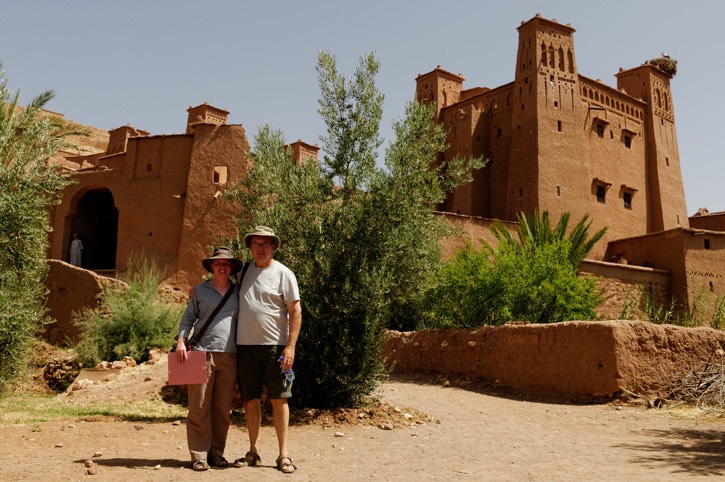
Villages built of mud bricks blended so well into the scenery they were sometimes barely noticeable until we got quite close. Every village had its ancient Kasbah: some in ruins, others still inhabited. The traditionally constructed villages appeared timeless and the farmers were carrying on their work as their forefathers had for countless generations. But on closer inspection, we could see that roofs were often adorned with satellite dishes and a comprehensive network of tall masts seemed to spread mobile phone signals into every nook and cranny in the land.
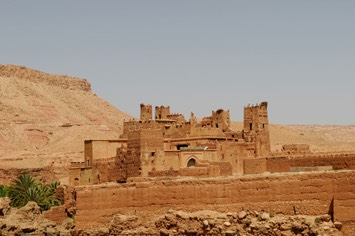
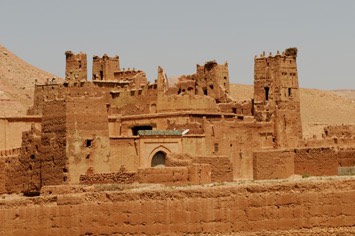
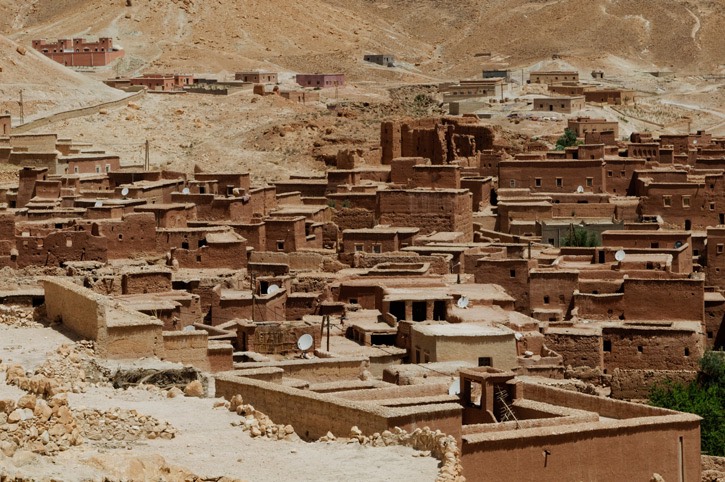
Mud brick walls are constructed using a wooden casing or shuttering, which is clamped in place and the mud packed in to create one short section of wall at a time. When dry enough, the poles running through the wall are withdrawn and the casing removed, leaving a series of regular holes so characteristic of these walls.
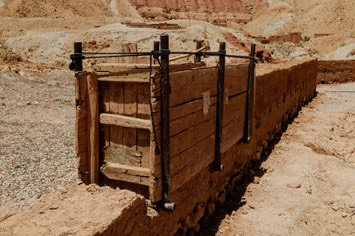
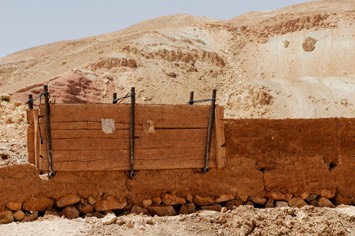
Rock formations sometimes eroded into fantastic shapes. Each hillside seemed to have its own individual colour, often quite different to its nearest neighbours.
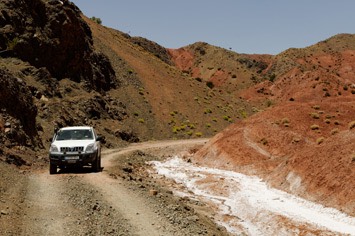
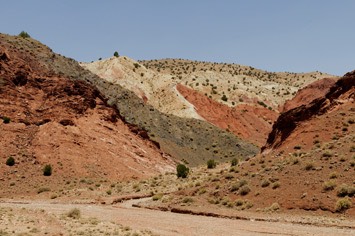
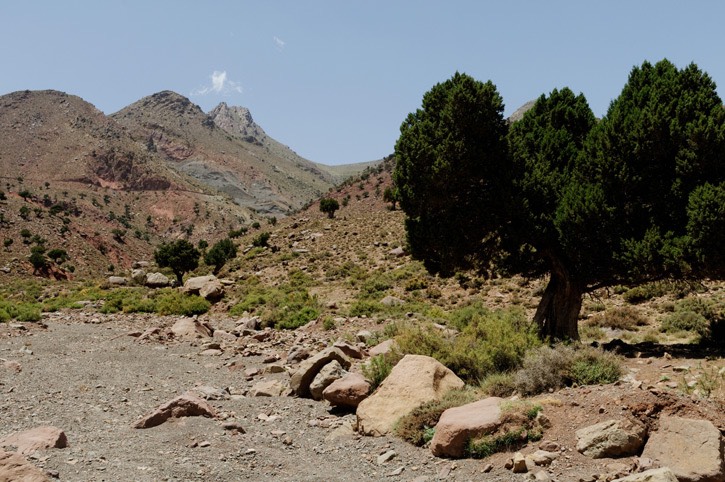
Continuing north, we drove up to meet the main road to Marrakesh and then looped back round and returned to Ouarzazate. On the way we met some independent travellers for the first time on this trip: Marcus, Emma and their two kids in a British Landrover. When we arrived back at the campsite we found we had been joined by a new neighbour; the amazing Frank van Rijn, who seems to have spent most of his life travelling the world on a bicycle (www.frankvanrijn.nl).
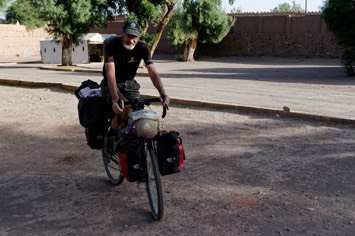
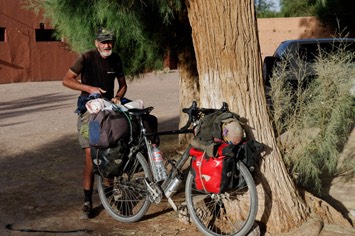
Friday, 14/06/2013 – Ouarzazate – Zagora
As we drove back to camp on the previous day we passed the film studios on the outskirts of Ouarazate, but it had been way too hot to visit then. So we decided to take a tour of the Atlas Corporation movie studios before heading on south to Zagora. Our guide Mohammed was impressive, both as a linguist and as a movie buff. Within an hour we travelled from Tibet to ancient Egypt, passing Jerusalem and a formidable array of siege machines on the way.
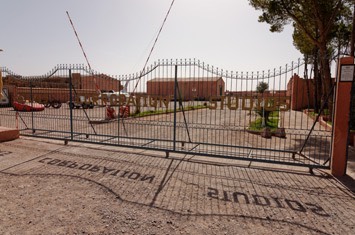
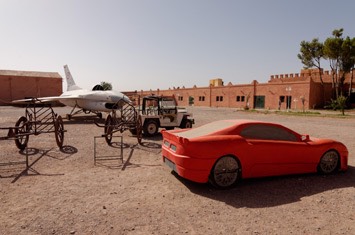
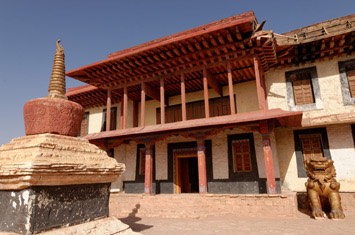
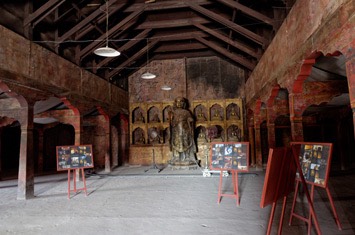
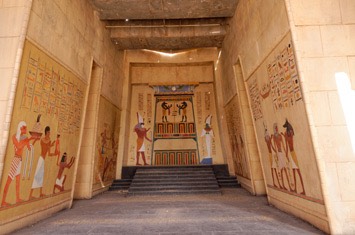
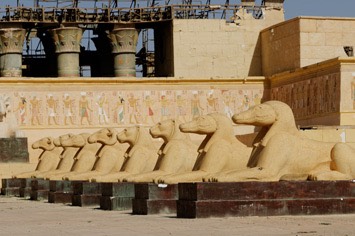
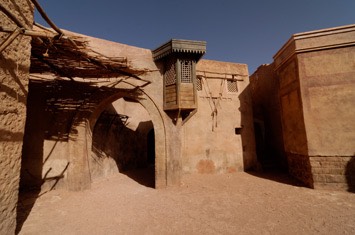
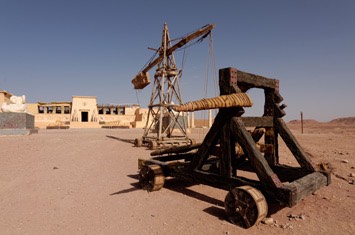
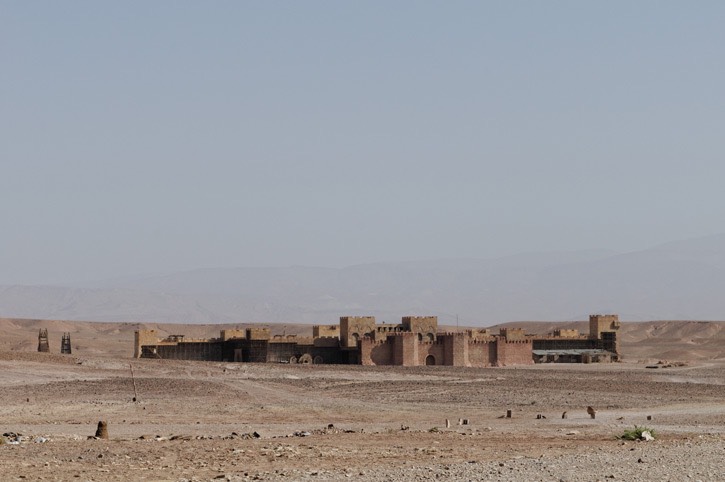
The impressive façades of temples, palaces and street scenes looked very realistic, but wrapping on a marble pillar with his knuckles, Mohammed demonstrated the lie, and walking around behind the scenes exposed a mass of anarchic wooden scaffolding propping the whole thing up.
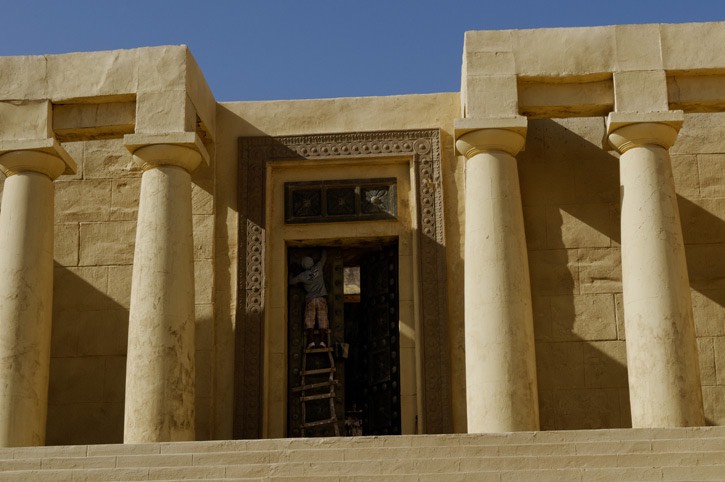
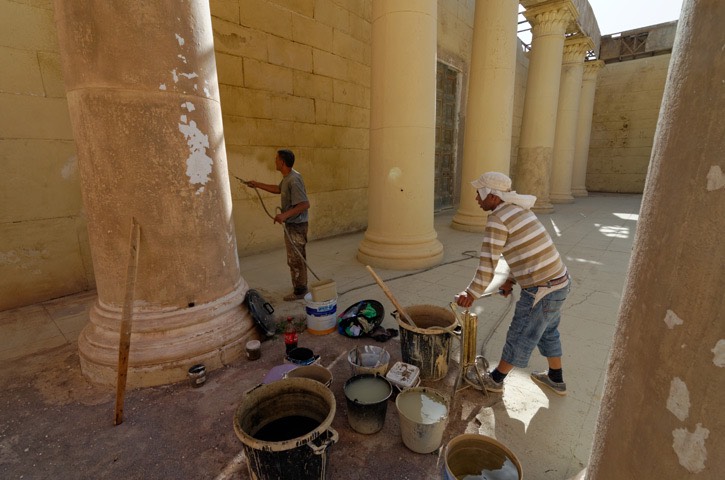
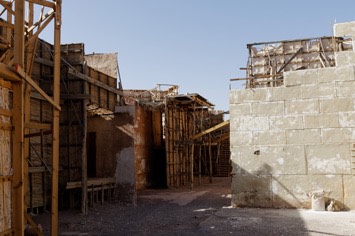
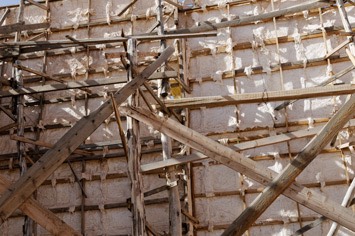
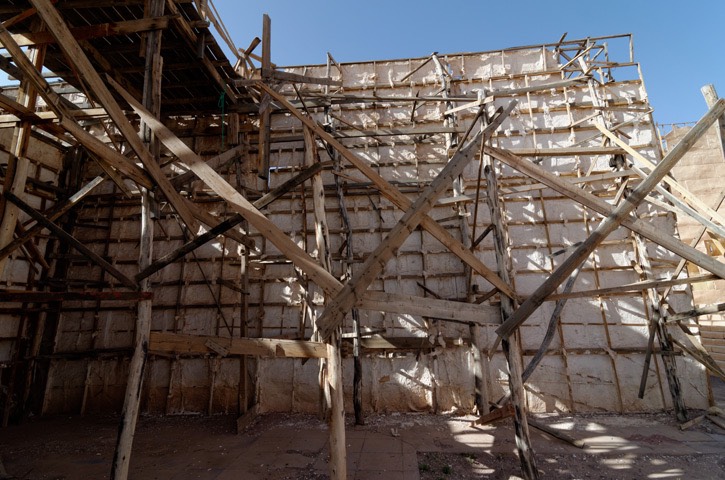
The drive down to Zagora took us through the wonderfully-green Draa valley, sprinkled with ochre kasbahs. The camp site we were heading for was located in a palmerie on the far side of town, but as we arrived in Zagora a motorbike was scrambled and sped through the busy traffic to intercept us. Giving the guy a smile and a polite “No, thank you” wave we threaded our way through town and down the track to our destination. As we stepped out of the car in the deserted camp site our moto-man drove in behind us and introduced himself as a specialist four-wheel drive mechanic, Mohammed Gordito. If we needed any work doing, he was our man. We had to admire his energetic pursuit of potential new customers.
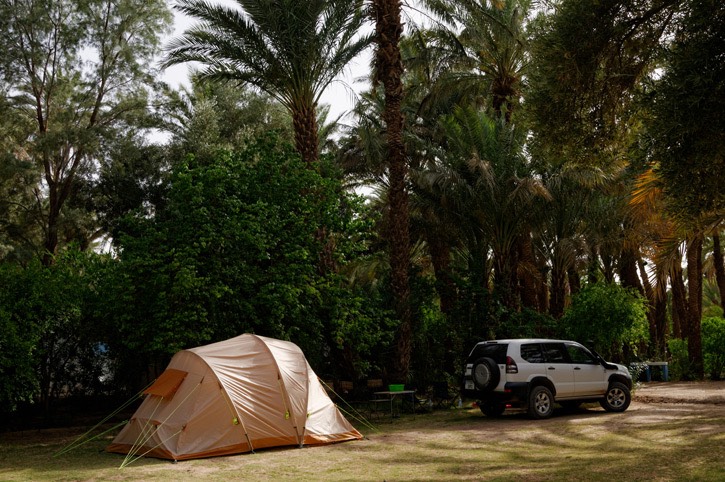
Saturday, 15/06/2013 – Stationary in Zagora
We awoke to find a sand storm blowing. The air was filled with orange sand and it was clearly pointless driving out into the desert. So we had a lazy day pottering around the camp site bird-watching. The turtle doves were especially fascinating, as they poked about under bushes selecting twigs for nest building.
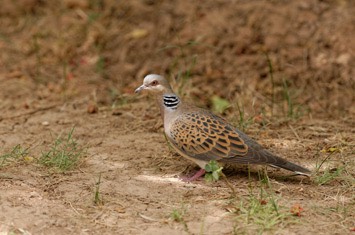
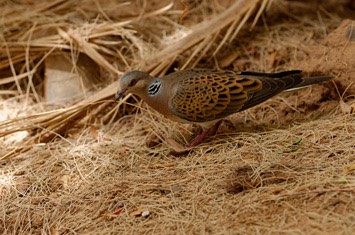
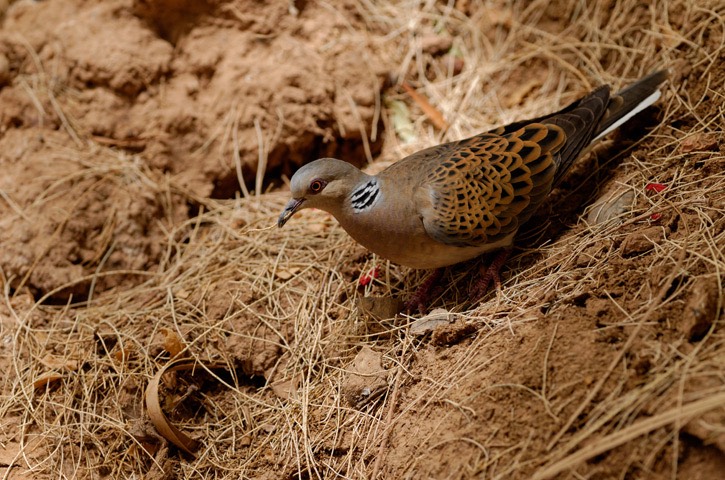
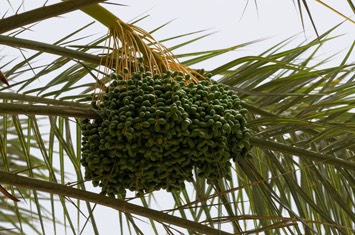
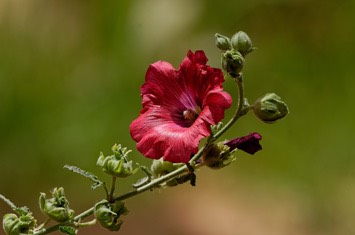
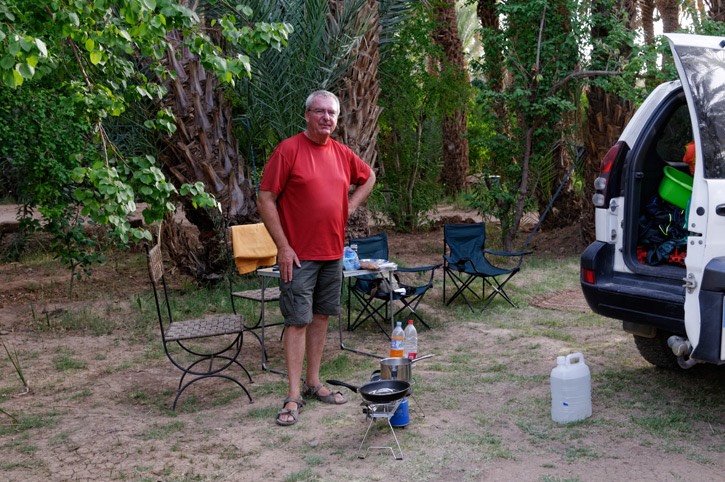
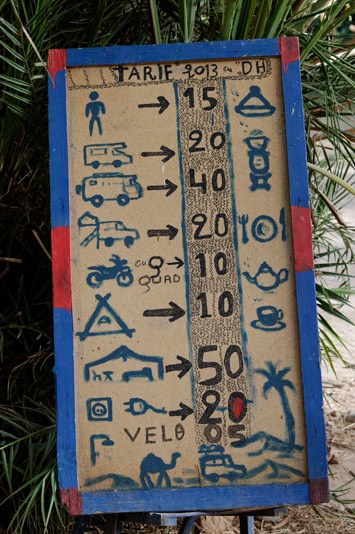
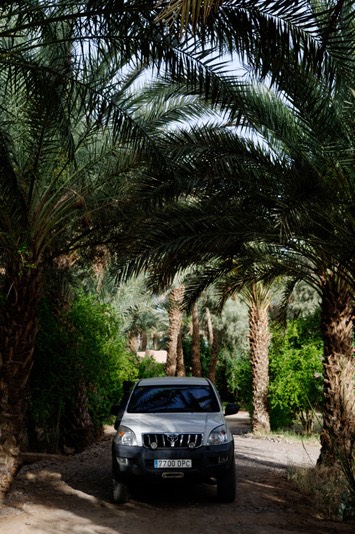
Sunday, 16/06/2013 – Zagora – Taliouine
Heading west from Zagora we passed through sandy desert with a light scattering of small acacia trees and bare stony desert. Road-making crews were relentlessly sealing the rough pistes through desert and mountain. How long these will remain in good condition is another matter, because there’s nothing worse than a badly potholed tarmac road and the more they create, the more there will be to maintain.
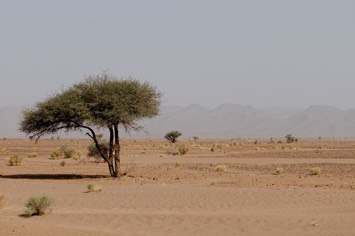
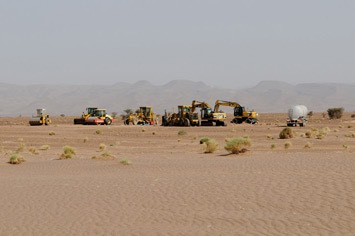
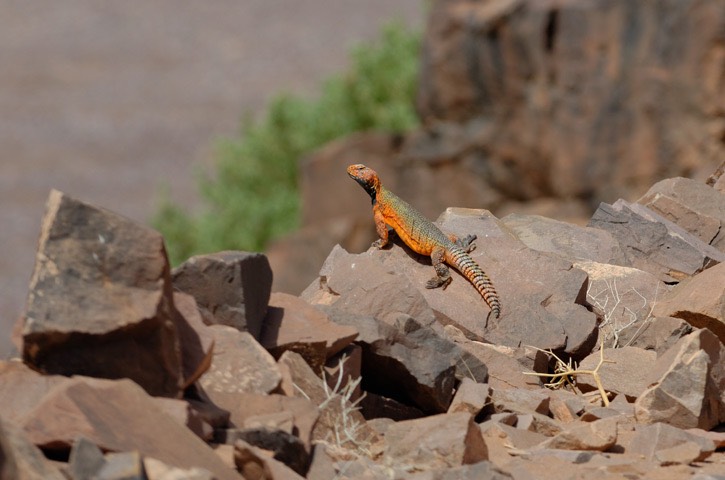
We drove up a valley studded with small palmeries, watered by a mountain stream and flanked by harsh, stony desert. Ancient graveyards were typically located next to the shrines of Sufi saints; their forest of irregularly set upright stones having the appearance of some natural phenomenon, like a field of eroded termite mounds.
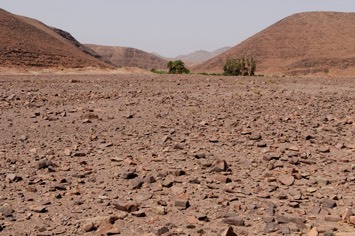
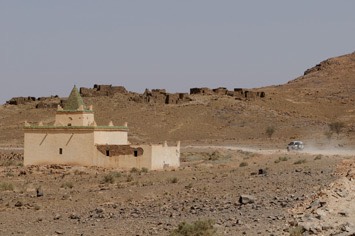
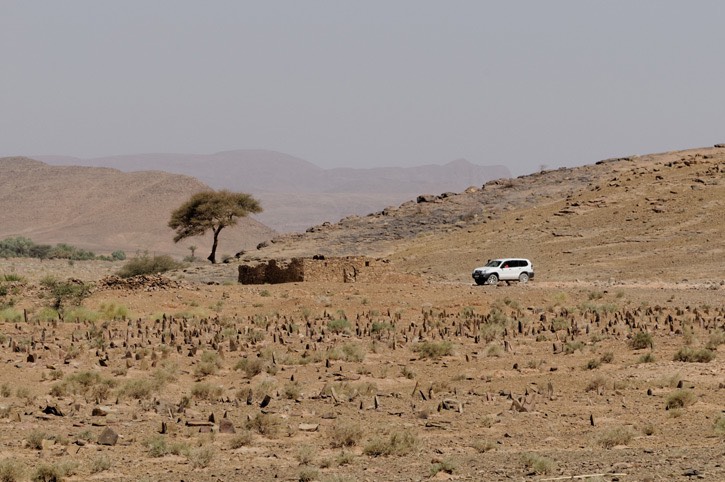
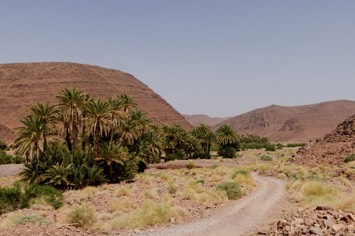
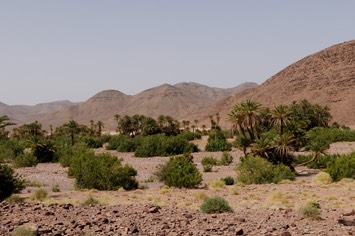
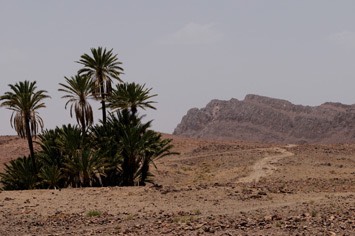
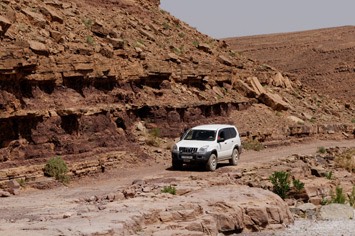
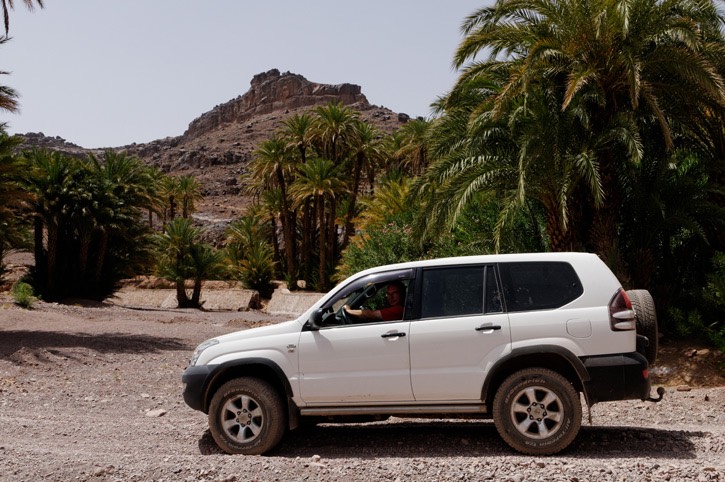
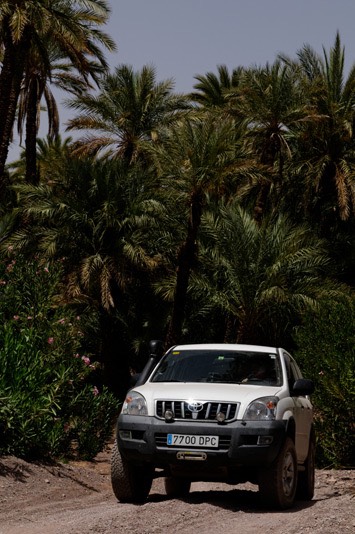
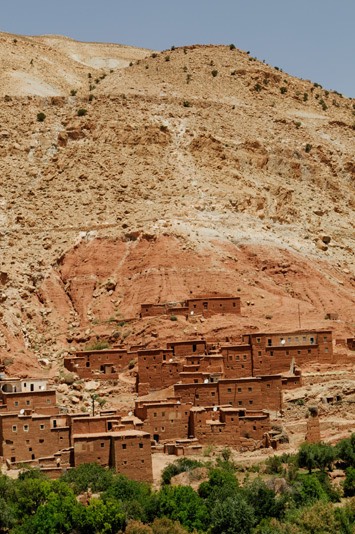
Outside one village, a cherished old Peugeot, once the preferred workhorse of desert roads, rested in the shade of a cane car-port.
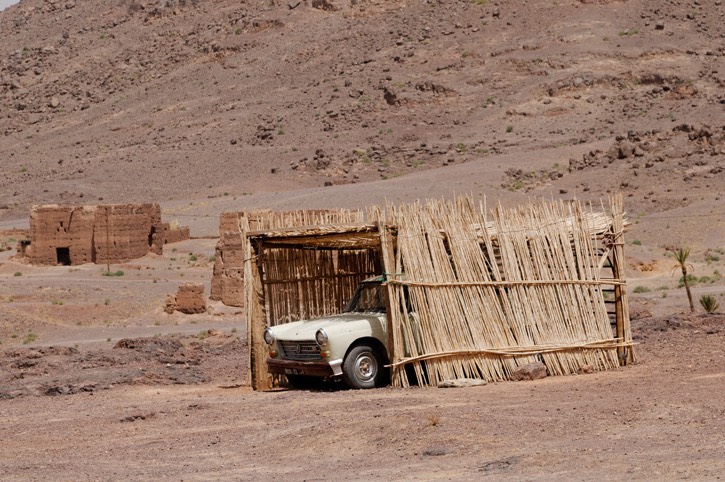
At the end of a long drive through wonderfully unspoiled scenery, we arrived at the lunar desolation of a huge cement works that had gouged a great wasteland out of the countryside.
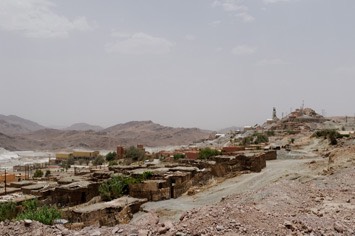
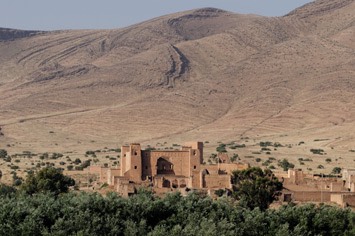
Monday, 17/06/2013 – Taliouine – Marrakesh
Barbary ground squirrels are a common sight on Moroccan roadsides. We discovered that the recent practice of creating gabion walls, stout wire mesh holding rocks used to reinforce roads around bends and over culverts, created ideal habitats for the endearing little creatures. The wire may not be photogenic, but the artificially created living space it provides seems to have encouraged some local population explosions!
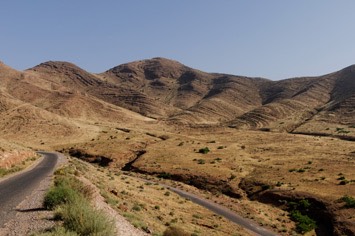
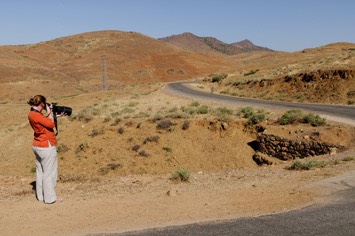
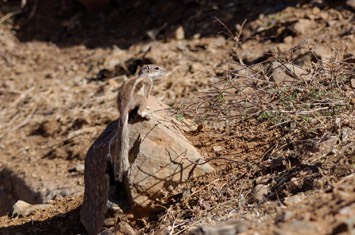
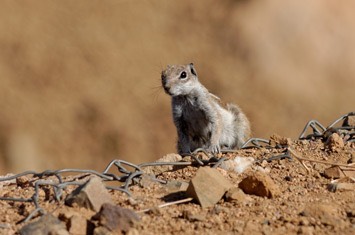
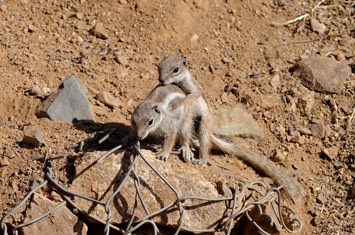
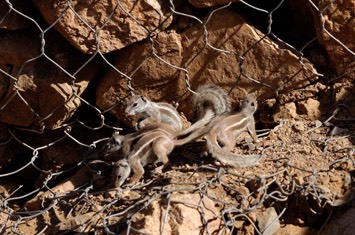
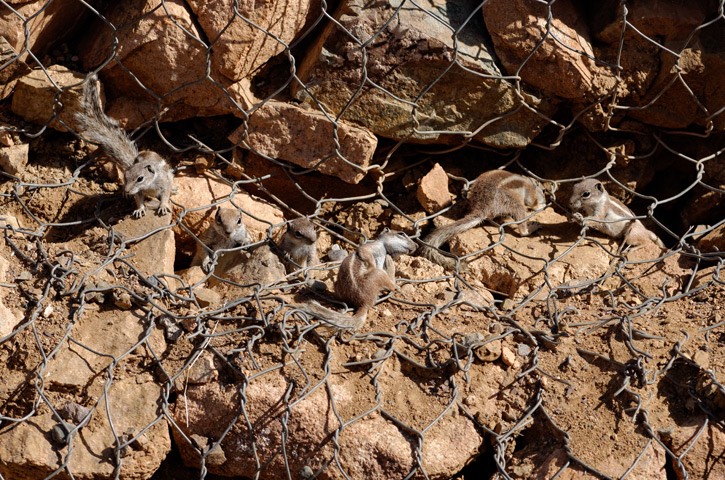
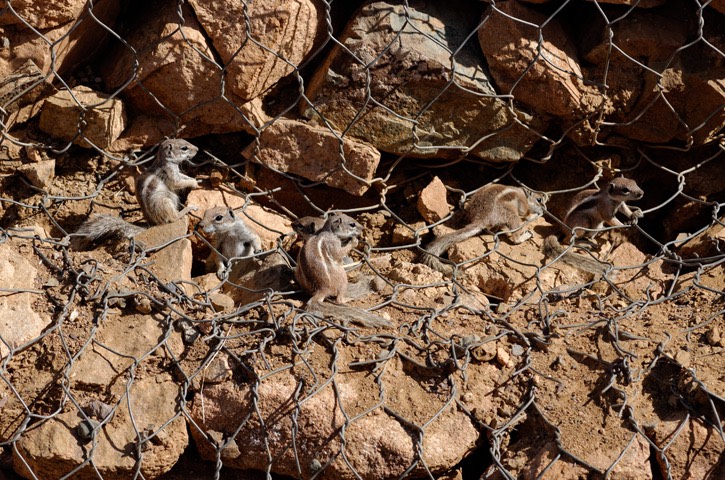
Driving up higher in the mountains, we came across some of the local ornithological specialities: pairs of trumpeter finches, rock sparrows, black and black-eared wheatears. Large colourful lizards stood sentinel on prominent rocks, but soon darted away to hide when approached.
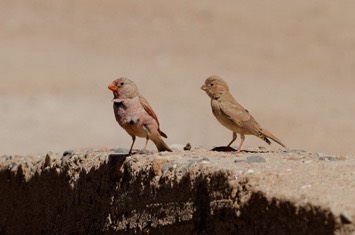
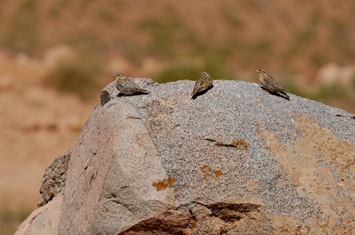
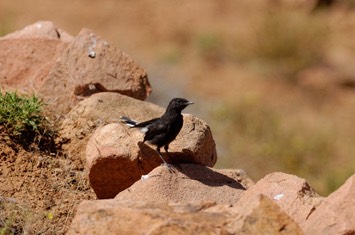
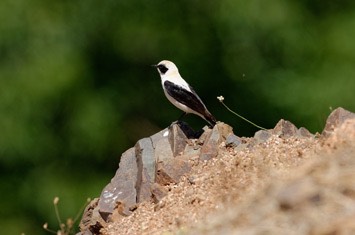
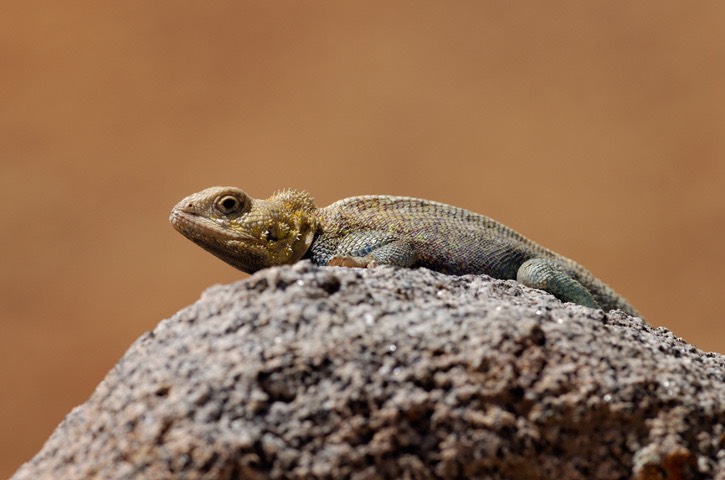
Sign posts were rare and not necessarily informative to us, being written in a formalised Arabic script. We relied on Olaf when it came to decision time at junctions, often having to stop and scroll through the map on the GPS screen to see where the different options would lead us.
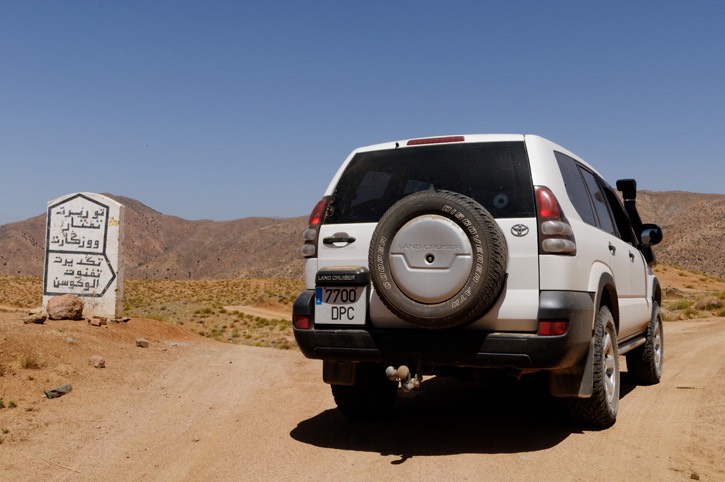
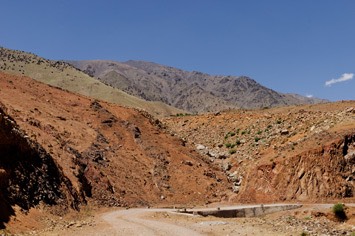
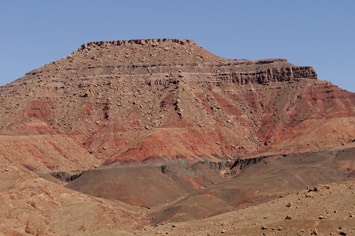
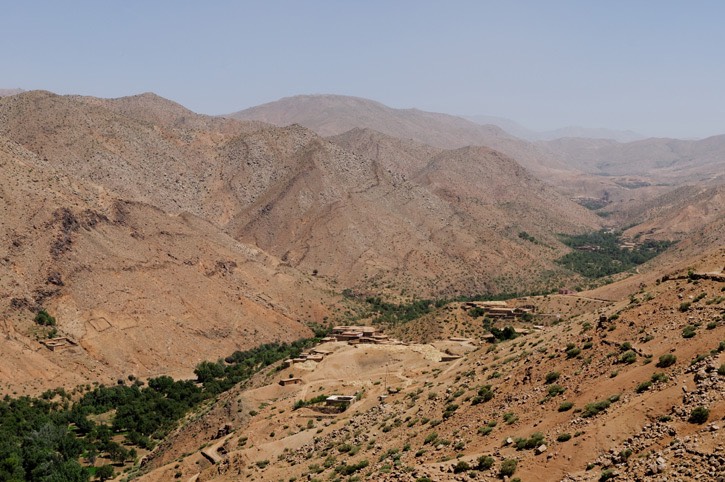
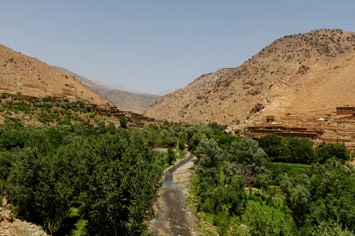
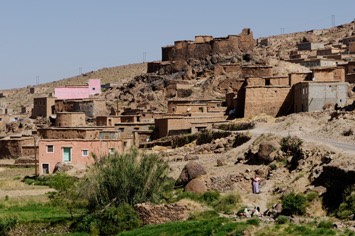
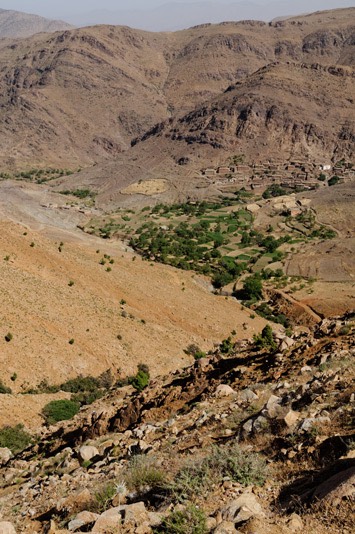
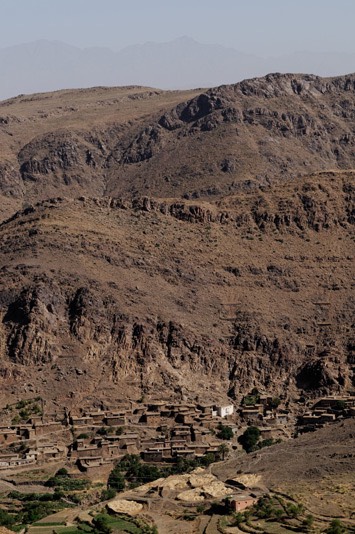
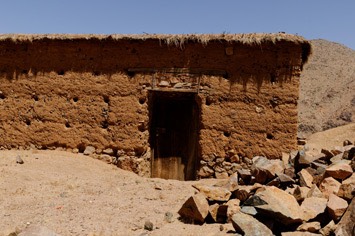
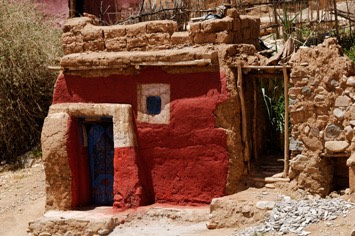
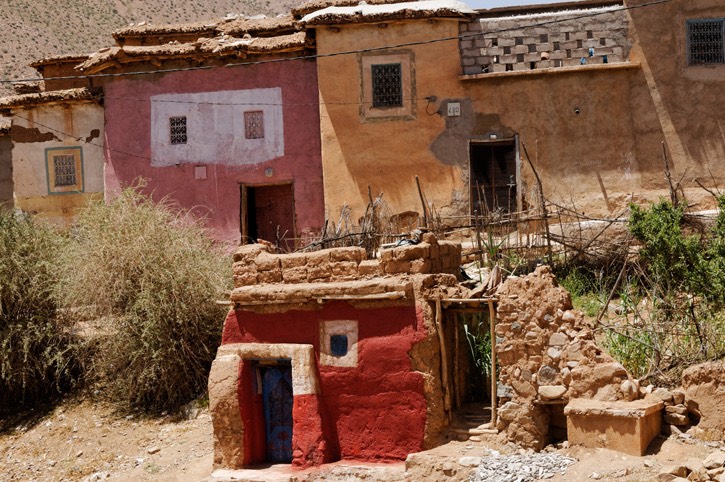
Toubkal, the highest peak in North Africa, loomed over us as we wound our way through hairpin bends on the small tracks connecting remote Atlas villages.
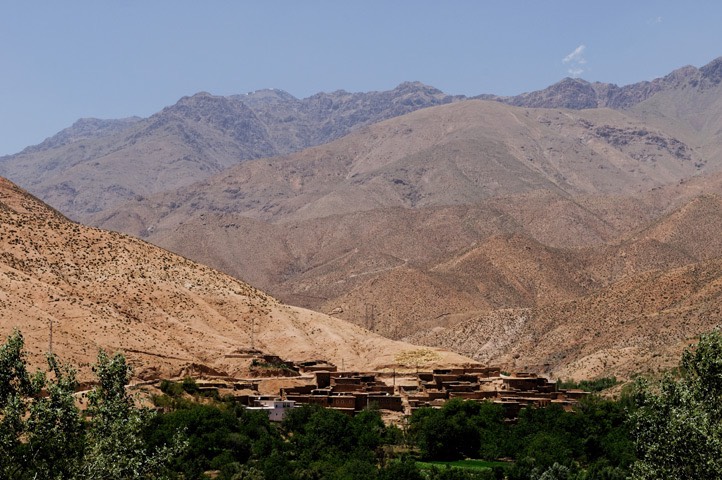
When we stopped to look at an old threshing machine in action, the villagers hailed us and called us down to take a closer look. The men were forking corn in one end and collecting grain into sacks at the other end of the noisily churning machine. They were a happy bunch, working hard but cheerfully, although safety standards were rather different to those we are used to!
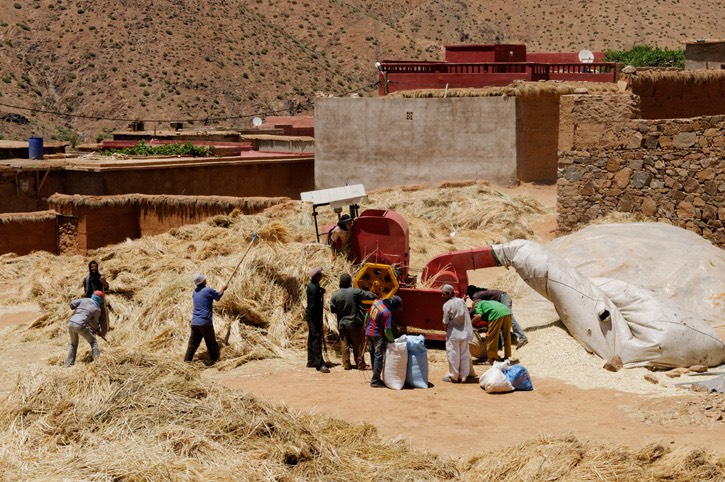
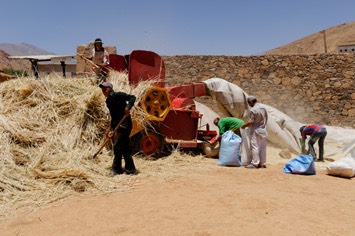
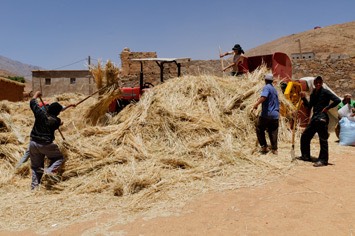
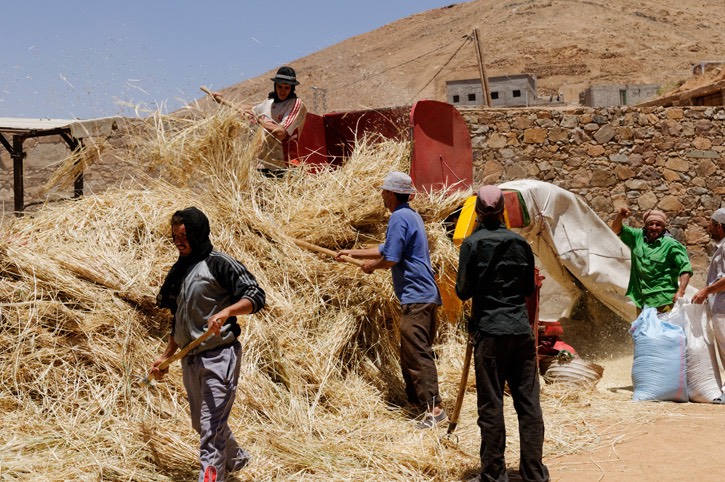
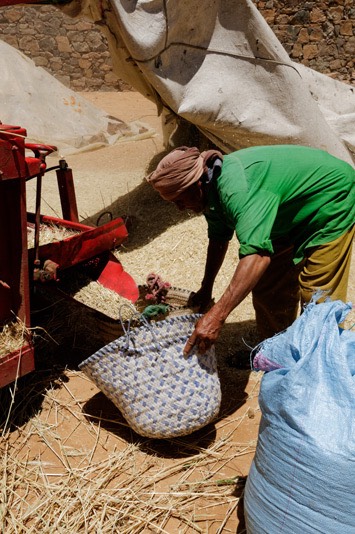
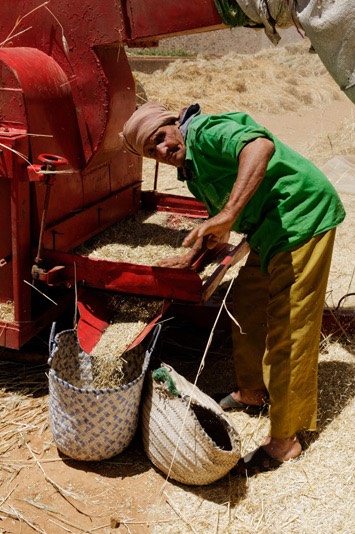
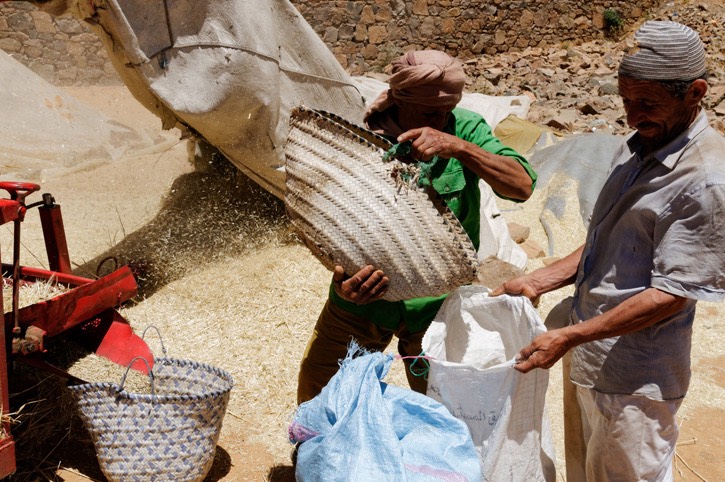
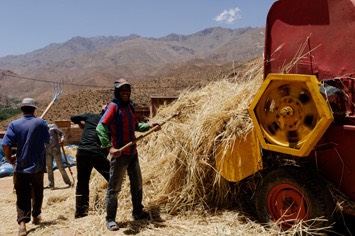
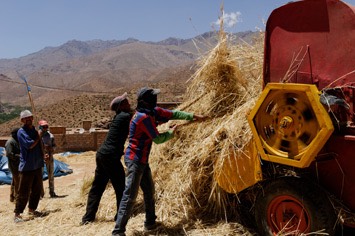

Tuesday, 18/06/2013 – Stationary in Marrakesh
We stayed at the Ibis Hotel and plunged into the madness that is Marrakesh for a day. Mick first stayed in the city in 1967 and has been lured by its charms quite a few times since. But this was the first time either of us had seen so many tourists wandering the Jemaa el-Fnaa, like wildebeest on the African plains attracting the attention of hungry predators. We spent several hours wandering through the souks, soaking up the colours, smells and sounds.
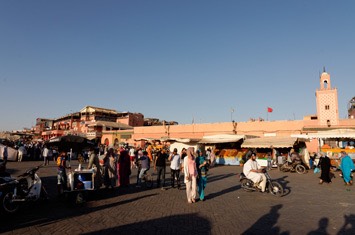
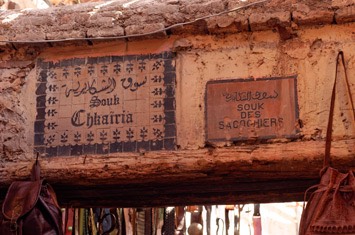
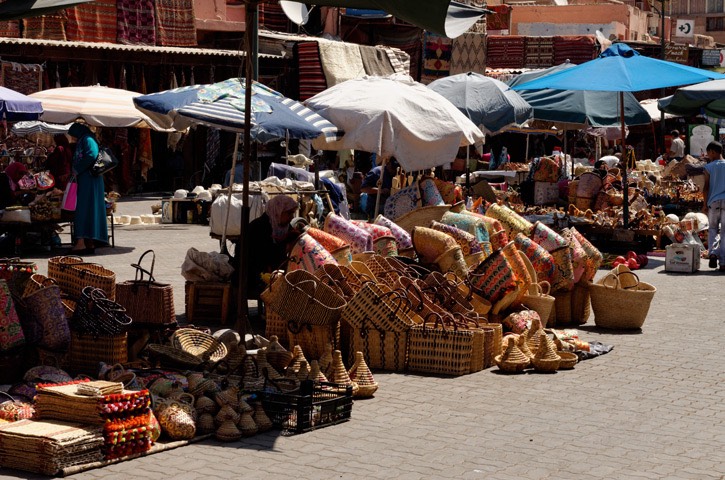
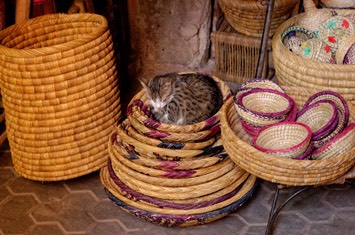
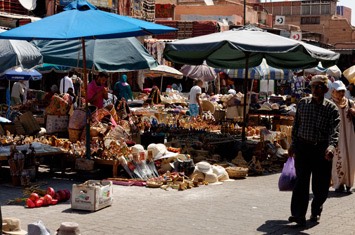
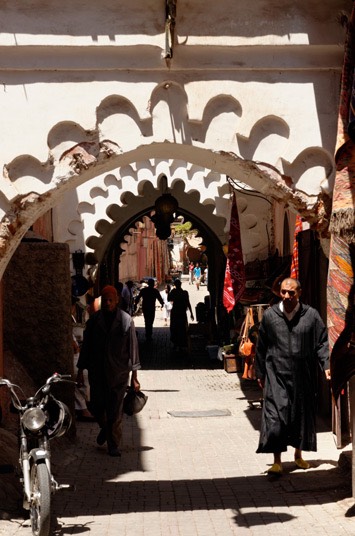
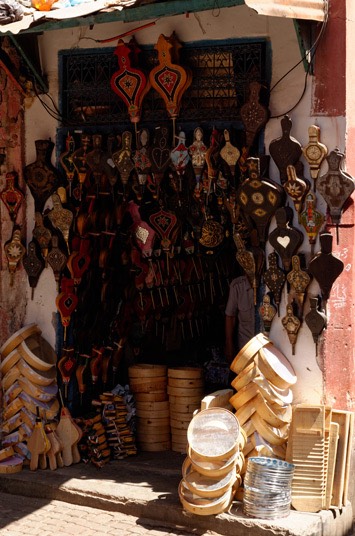
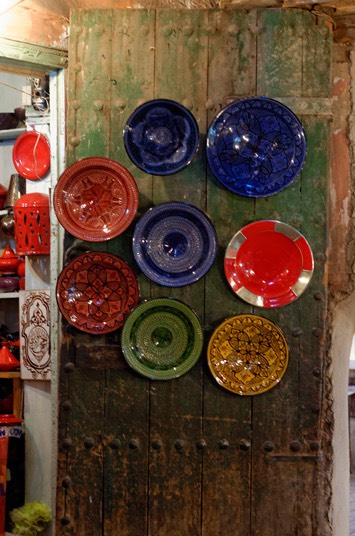
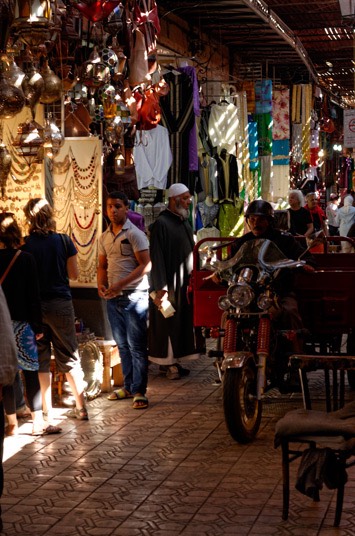
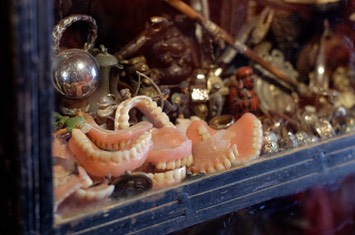
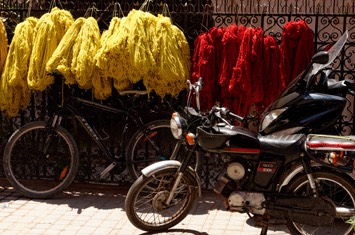
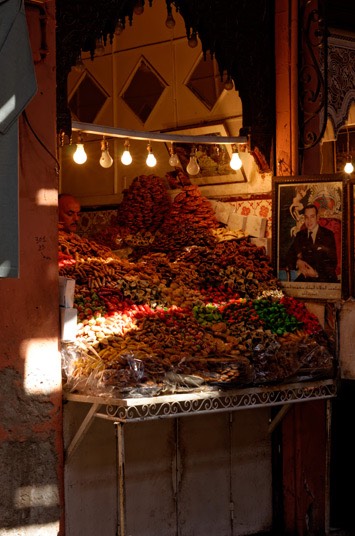
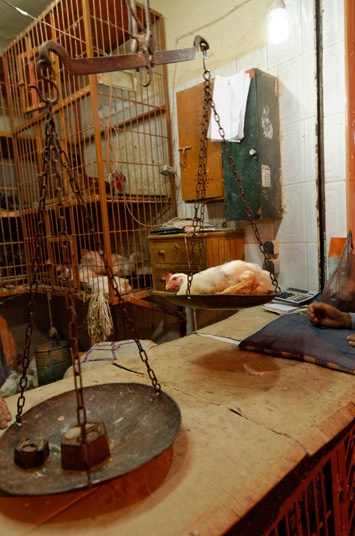
In one area we came across the grizzly remains of wild animals – gazelle heads, reptile and big cat skins and birds of prey. Tortoises and chameleons were on sale too. Out on the Jemaa el-Fnaa an old man displayed his menagerie that included a vulture, a kestrel, a hedgehog and a guinea pig.
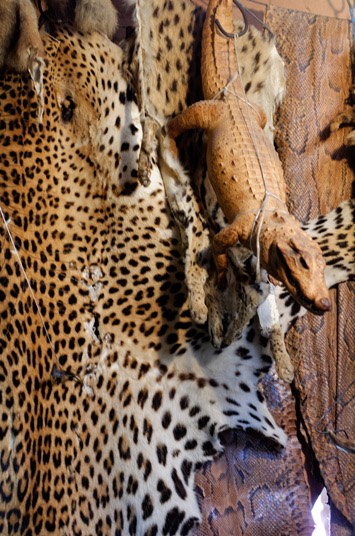
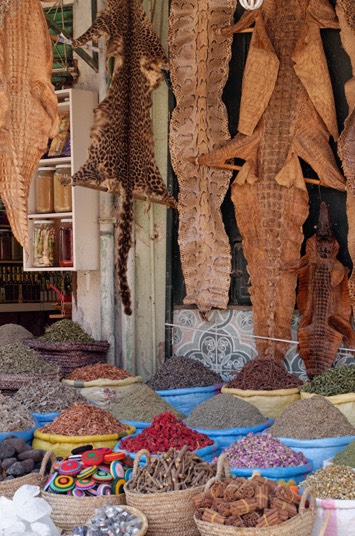
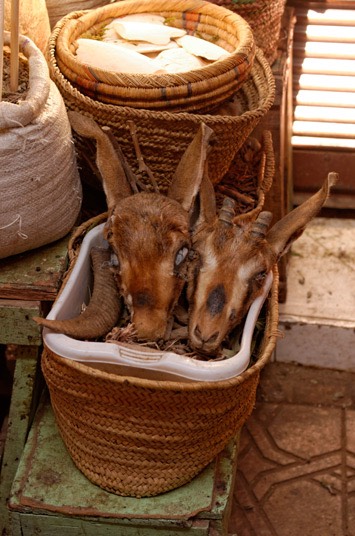
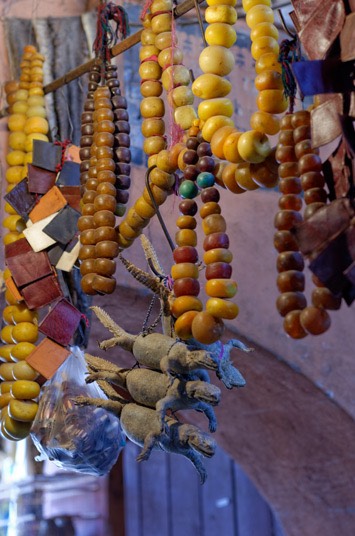
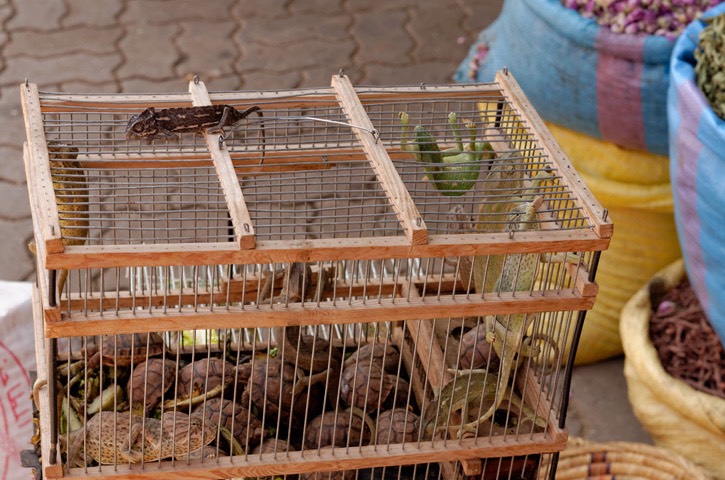
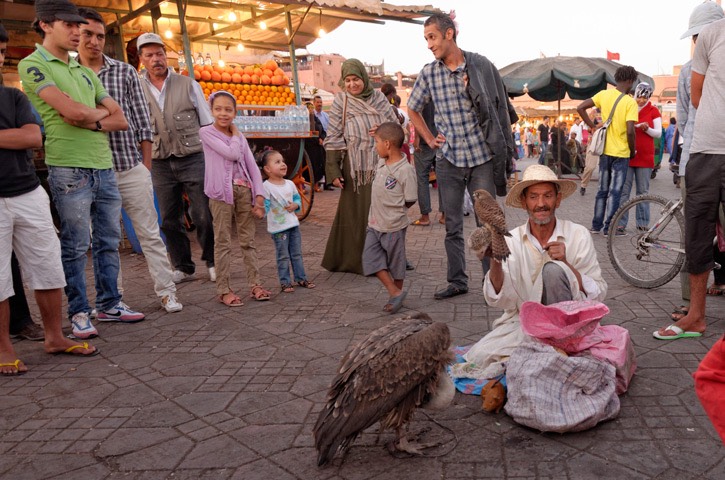
The range of food stalls in the Jemaa el-Fnaa seems to have proliferated since last we were here. Crossing certain parts of the square was like running the gauntlet as we were stopped every few paces by yet another hopeful restauranteur. Everyone had their own particular sales pitch and one guy even harangued us with a torrent of Cockney slang, apparently all learned from watching East Enders! The food was good, but not cheap by Moroccan standards.
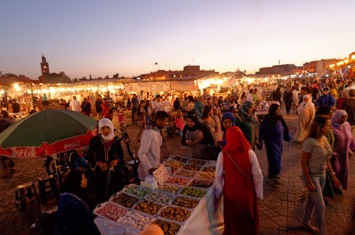
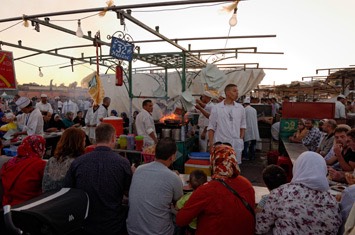
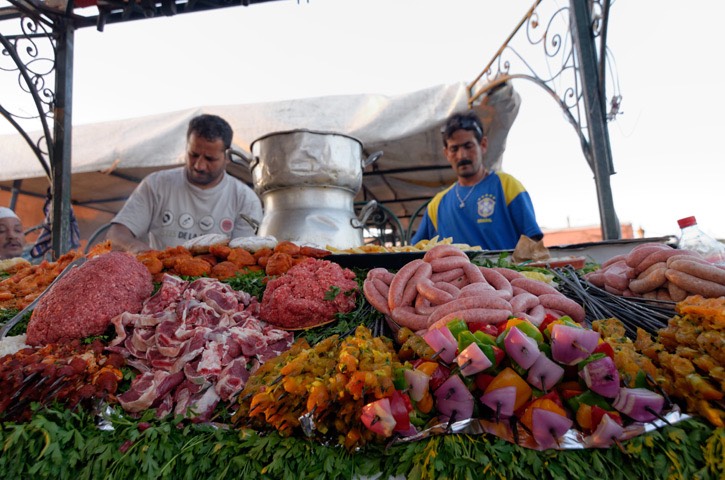
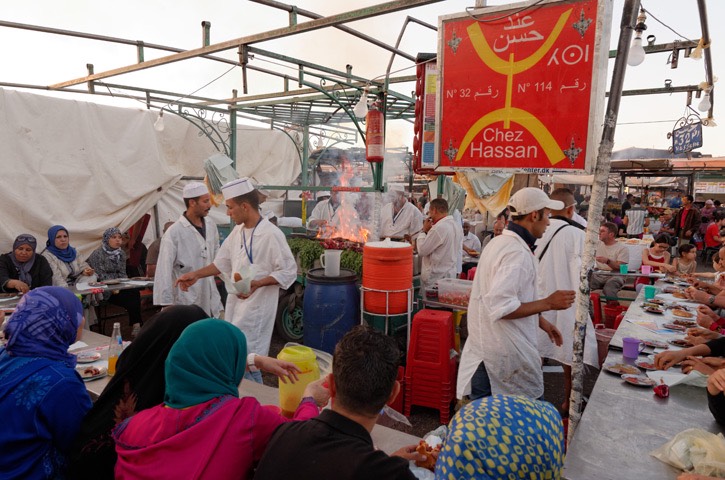
Wednesday, 19/06/2013 - Marrakesh – El Jadida
We set off from Marrakesh to Essaouira on the coast, a destination we had been to several times before. Coming closer to Essaouria, the number of argan cooperatives increased. Some were very big and smart looking but we chose to visit the women's argan cooperative in El Kheir. It was a small place with around a dozen women working there, and we had the feeling that the money spent there would benefit the women rather than going towards building a big, pompous shop. The work involved to crack all the argan nuts is incredible, as it is all done by hand. Apparently around 25 kg of uncracked nuts are needed to produce one litre of argan oil.
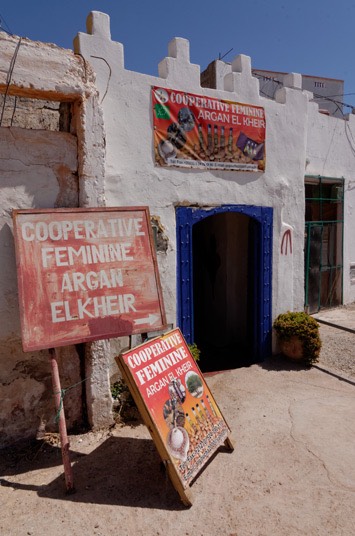
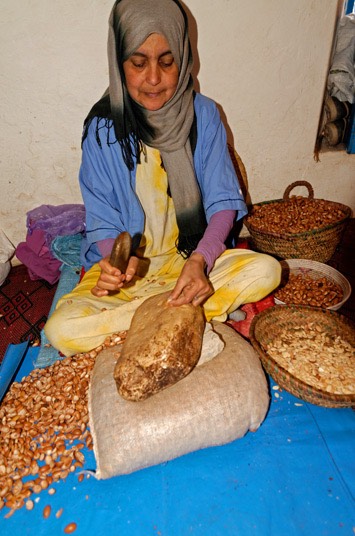
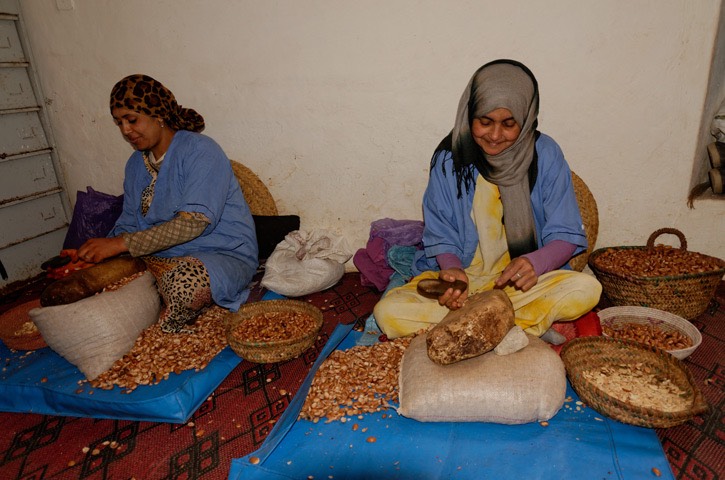
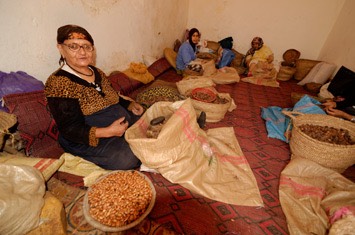
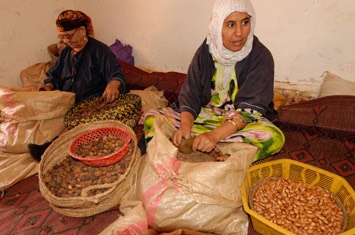
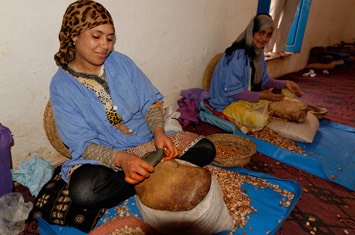
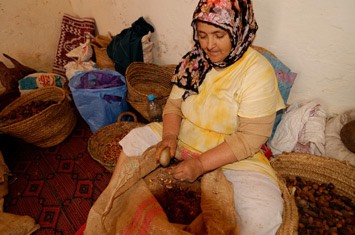
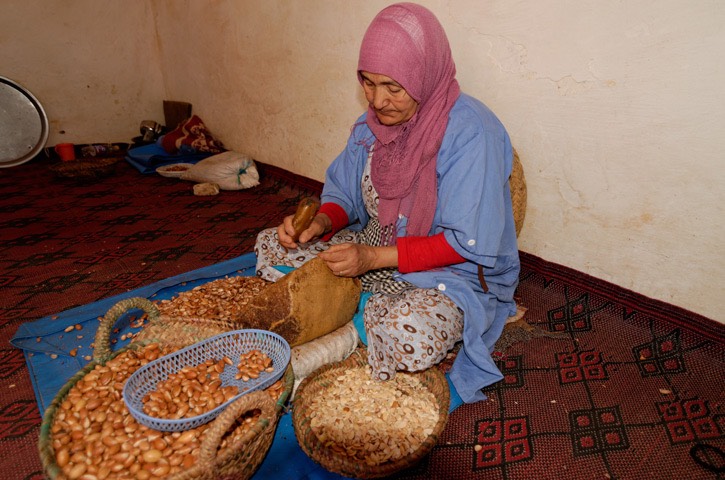
We were in for a shock when we arrived in Essaouira, as the town seemed to have become an extremely popular destination for wind surfers and general tourists. We decided to give it a miss and headed on up the coast. Passing through Safi we started to see a lot of horses being carried in trucks and trailers, all heading towards some kind of horse fair or market. They were splendid looking beasts and we would have liked to have stopped to investigate, but the parking looked impossible and we didn’t want to leave the car and all our kit some distance away, so we reluctantly headed on up the road. We ended up in El Jadida, where we stayed the night in a walled campsite within the city.
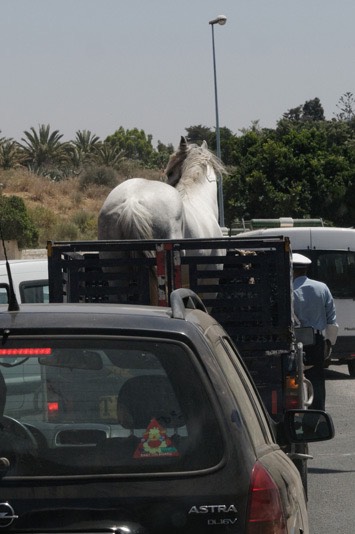
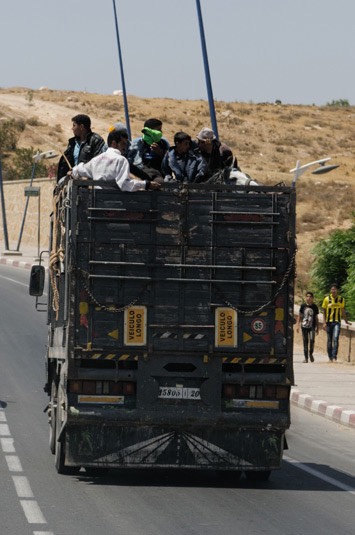
Thursday, 20/06/2013 - El Jadida - Cap Spartel
As we drove north from El Jadida we passed through a region where roadside stalls sold bright coloured pumpkins. We stopped to buy some at a particularly vibrant stall with peacocks on the roof.
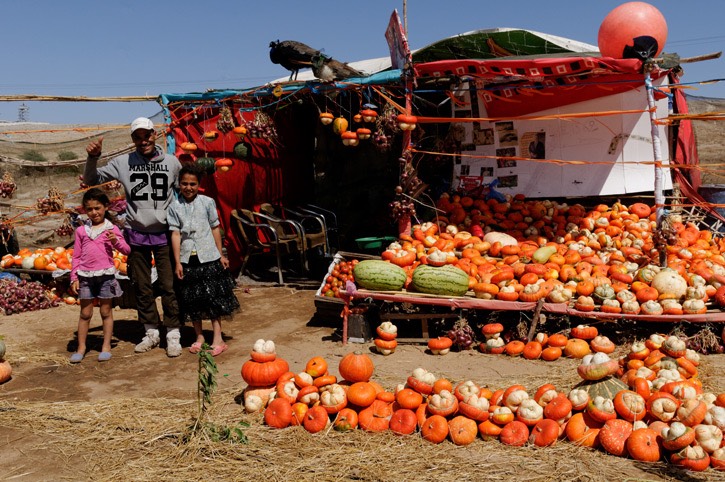
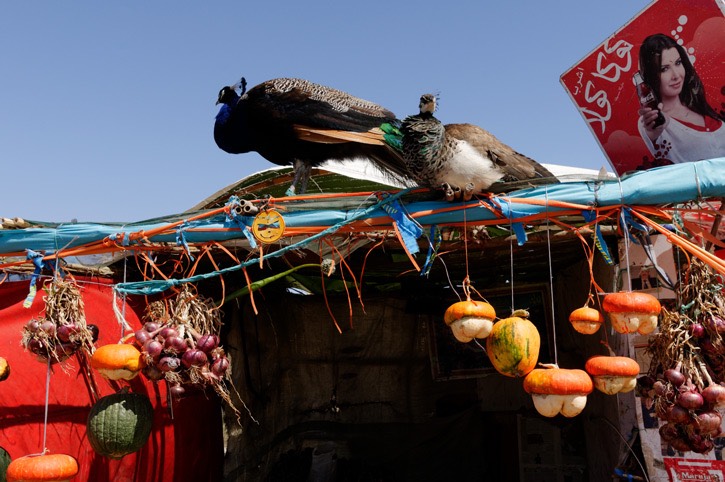
The lighthouse at Cap Spartel stands guard over the headland at the north-western tip of Africa.
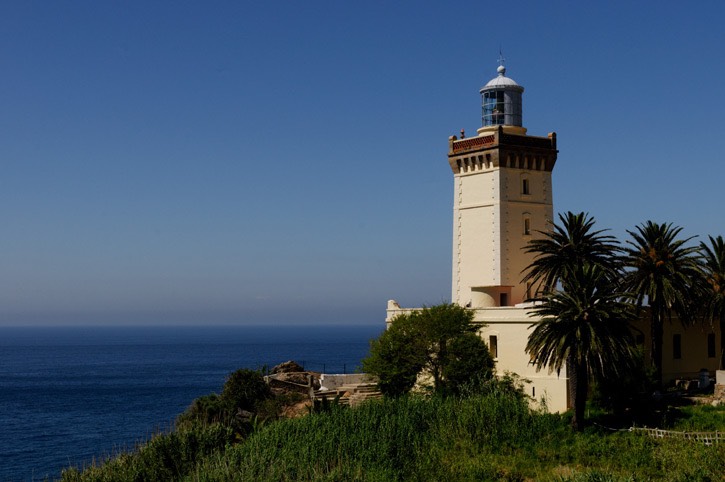
Nearby are the Caves of Hercules, an attraction much visited by locals. Although the caves have an ancient, natural origin, they have been greatly enlarged by quarrying over the centuries. The seaward entrance of the main cave is shaped like a map of Africa, this being one of the few features to retain its natural shape.
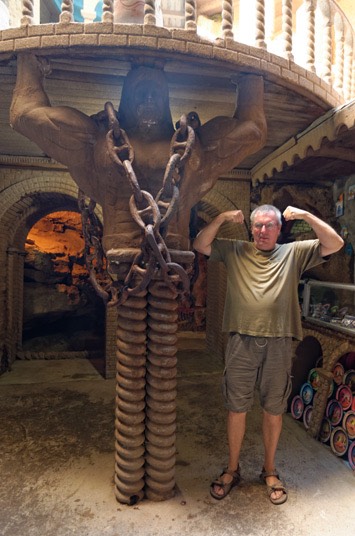
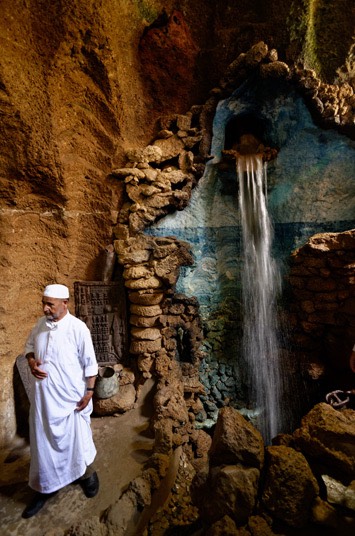
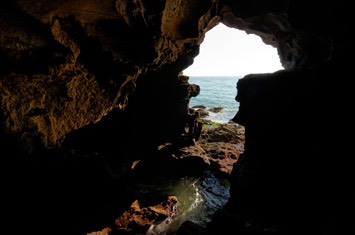
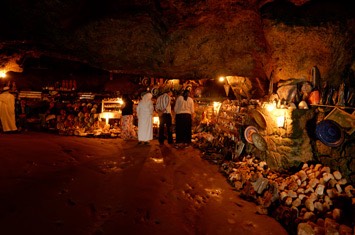
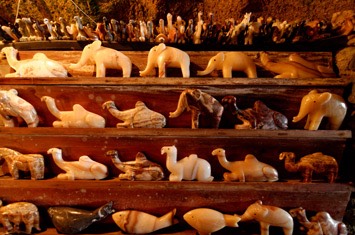
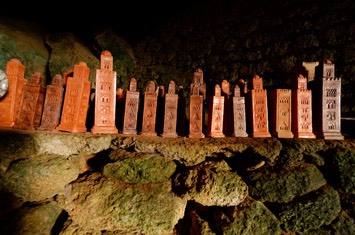
Outside the caves, there are cafés on the rock terraces overlooking the sea, where we watched the sunset over a bowl of delicious hot harira soup and fresh bread, followed by dates and mint tea.
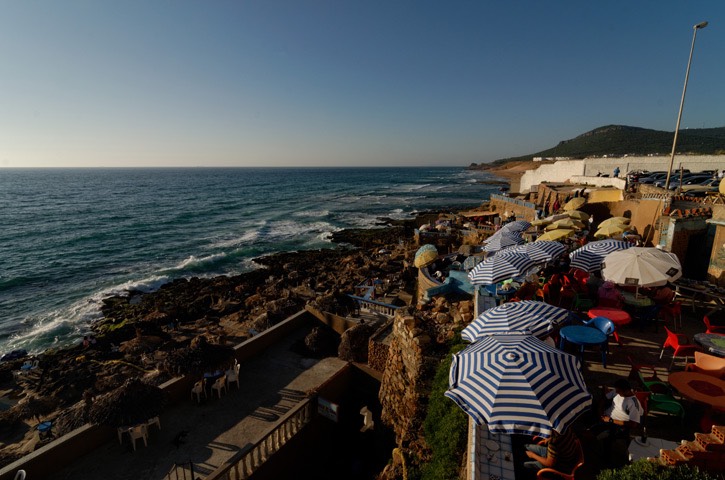
Friday, 21/06/2013 - Cap Spartel – Tanger
From the rather expensive campsite at Cap Spartel we headed up into the dense traffic of Tangier to catch the ferry across to Tarifa. It had only been a short trip but we thoroughly enjoyed it.